California Native Plants That Grow Along The Kern River Corridor
(Contribution acknowledgements: Frank Bedard, Stan Bergen, Clyde Golden, Andy Honig, Sasha Honig)ALKALI PEPPERWEED
Also called net pepper grass.
Family: BRASSICACEAE (CRUCIFERAE)(MUSTARD FAMILY), Genus: Lepidium, Species: dictyotum
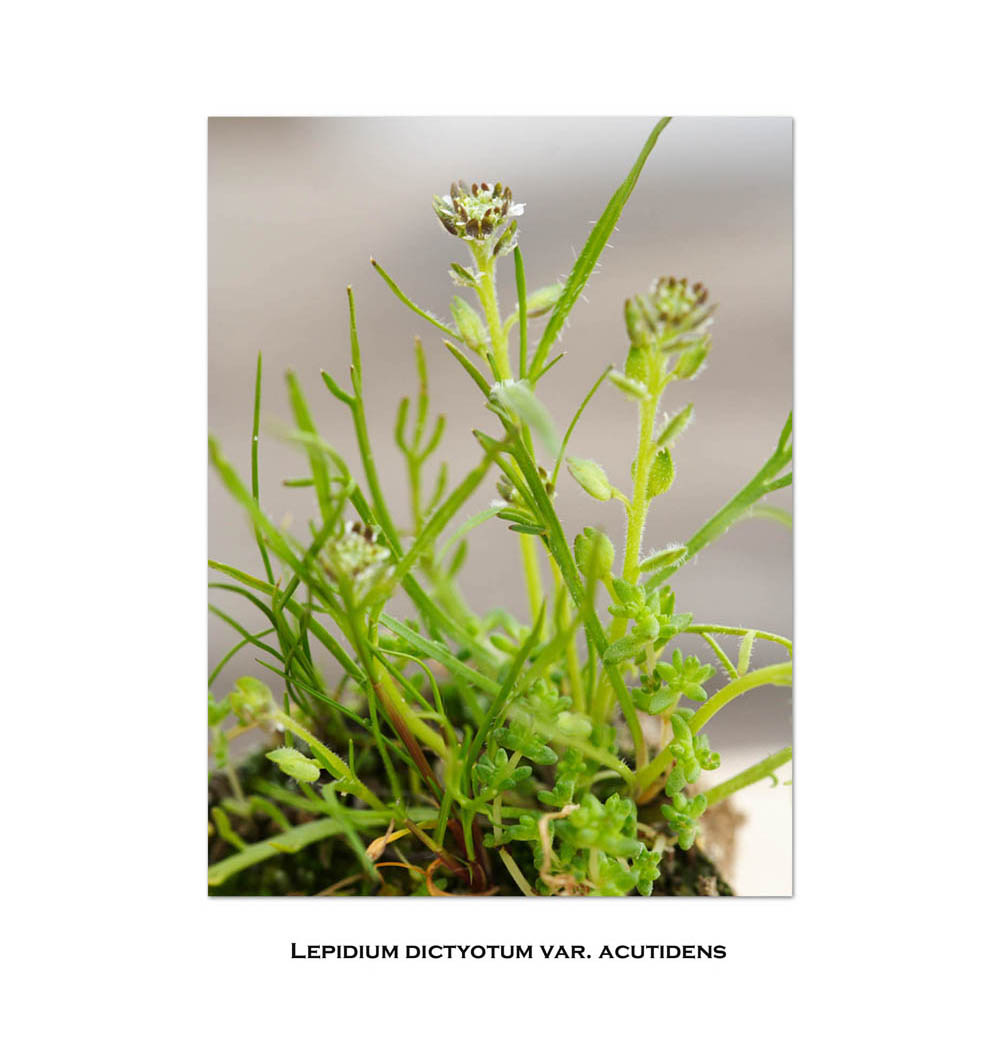
ALLSCALE SALTBUSH
Also called cattle spinach.
Family: CHENOPODIACEAE (GOOSEFOOT FAMILY), Genus: Atriplex, Species: polycarpa
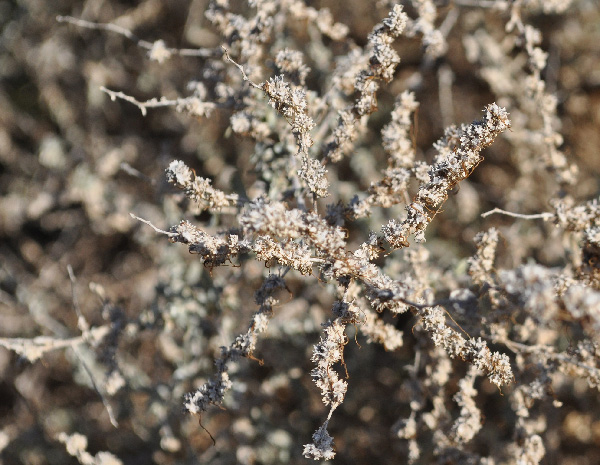
ANNUAL BURSAGE
Also called flatspine bur ragweed, burweed, western sand-bur.
Family: ASTERACEAE(COMPOSITAE)(SUNFLOWER FAMILY), Genus: Ambrosia, Species: acanthicarpa
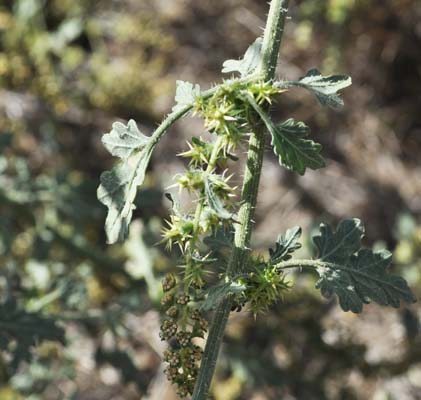
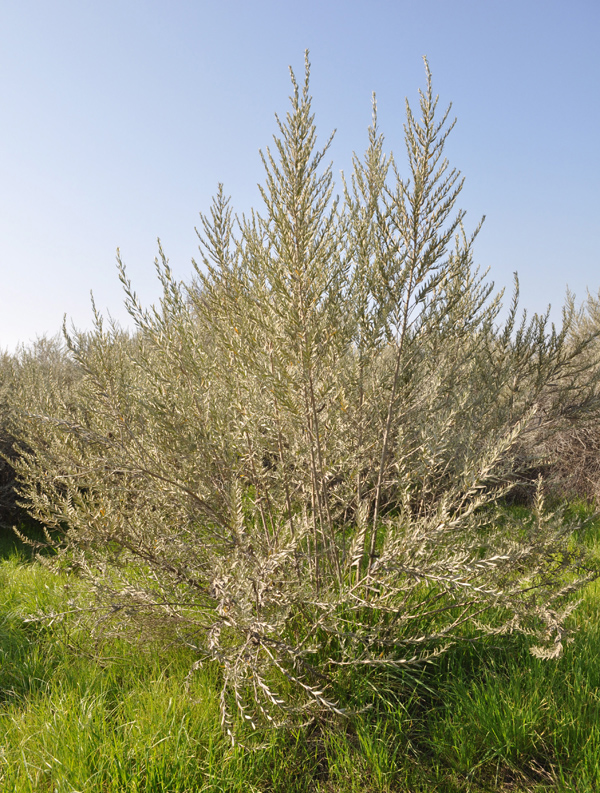
BAKERSFIELD CACTUS
Also called prickly pear cholla
Family: CACTACEAE (CACTUS FAMILY), Genus: Opuntia, Species: basilaris var. treleasei
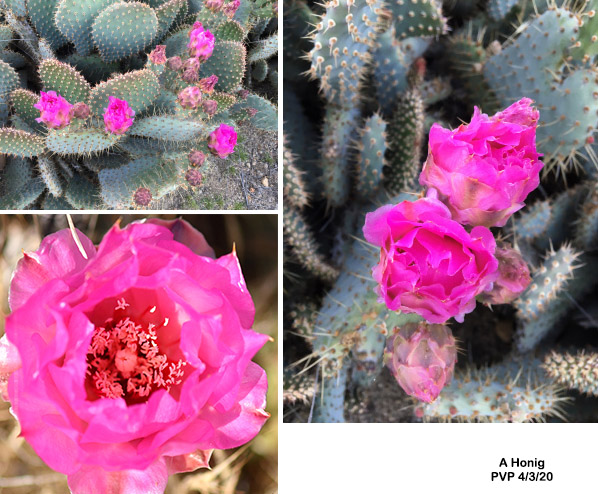
CHAPARRAL MISTLETOE
Also called big-leaf mistletoe.
Family: Santalaceae, Genus: Phoradendron, Species: macrophyllum
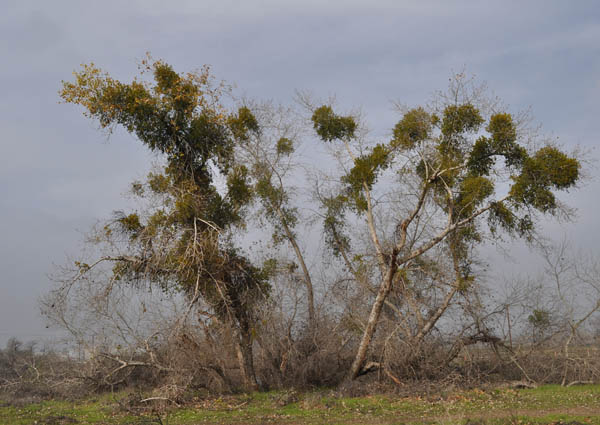
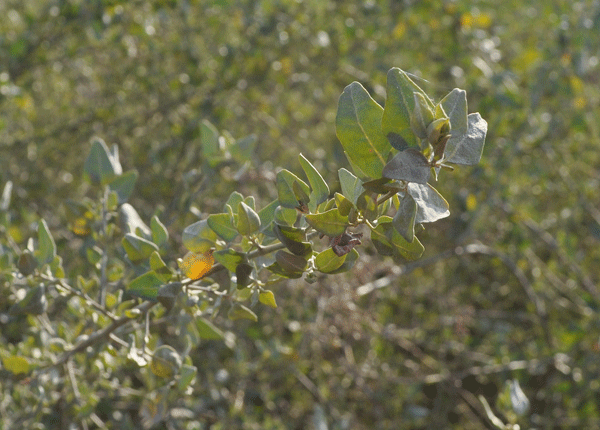
BLADDERPOD
Also called spiderflower, burro-fat
Family: Cleomaceae, Genus: Peritoma, Species: arborea
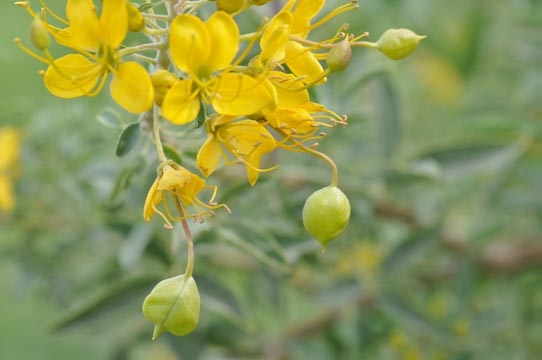
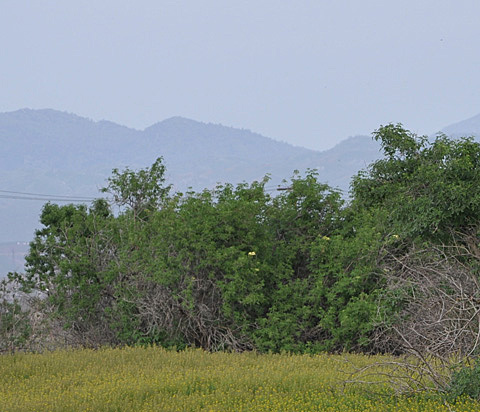
BUTTONBUSH BLOOMS
Also called button-willow, honey-bells
Family: RUBIACEAE (MADDER FAMILY) Genus: Cephalanthus Species: occidentalis
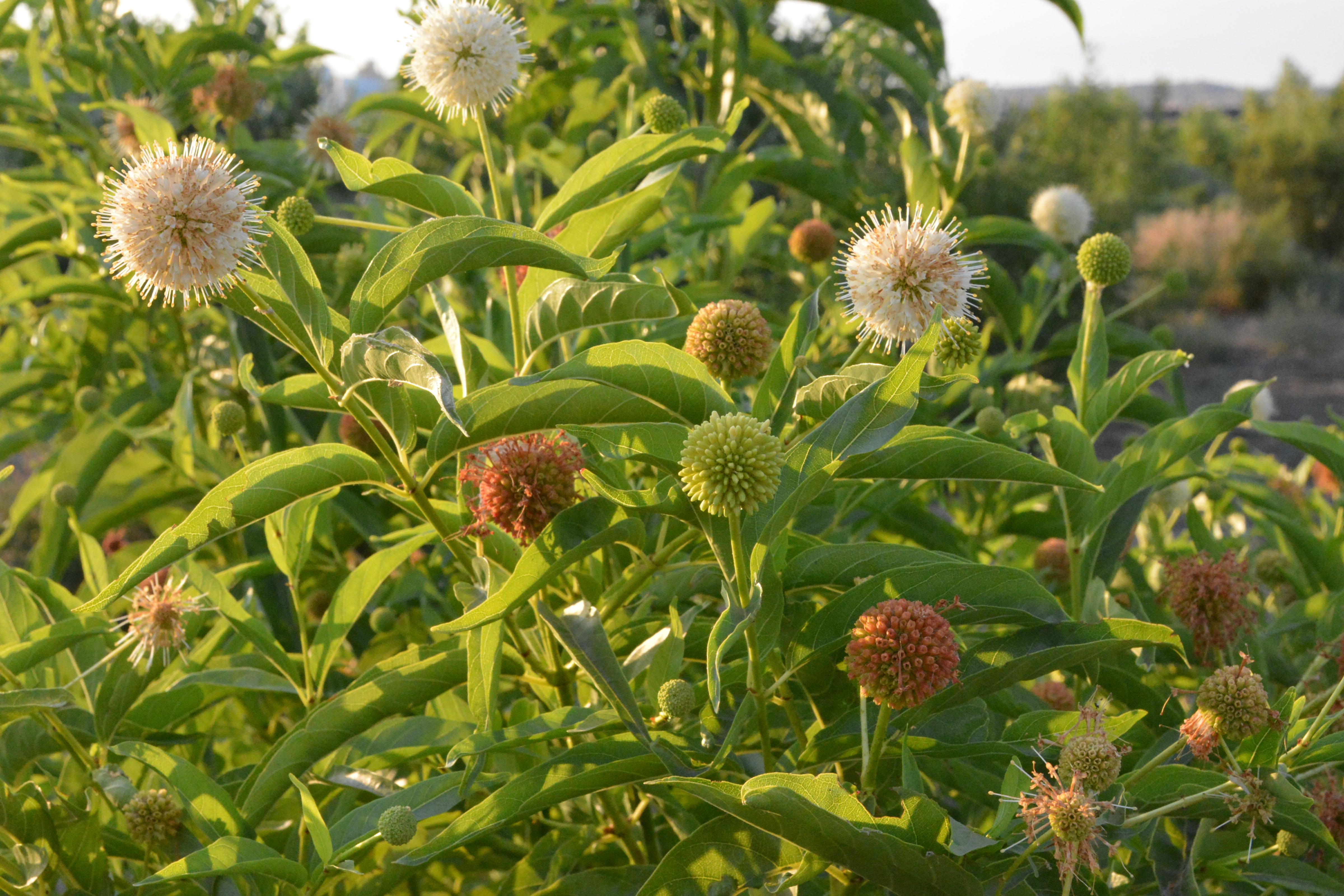
CALIFORNIA SUNCUP
Also called California evening primrose
Family: ONAGRACEAE (Oenothera) (EVEN ING-PRIMROSE FAMILY), Genus: Eulobus (Camissonia), Species: kernesis
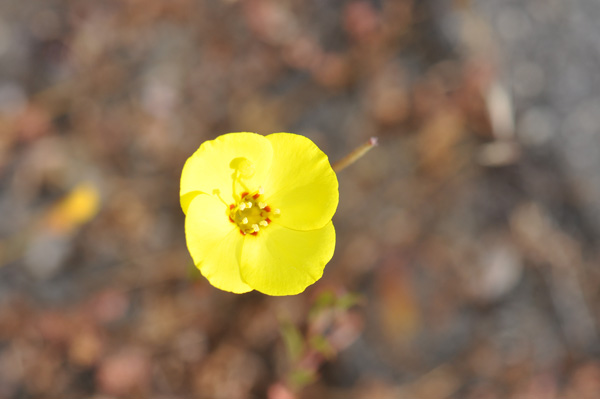
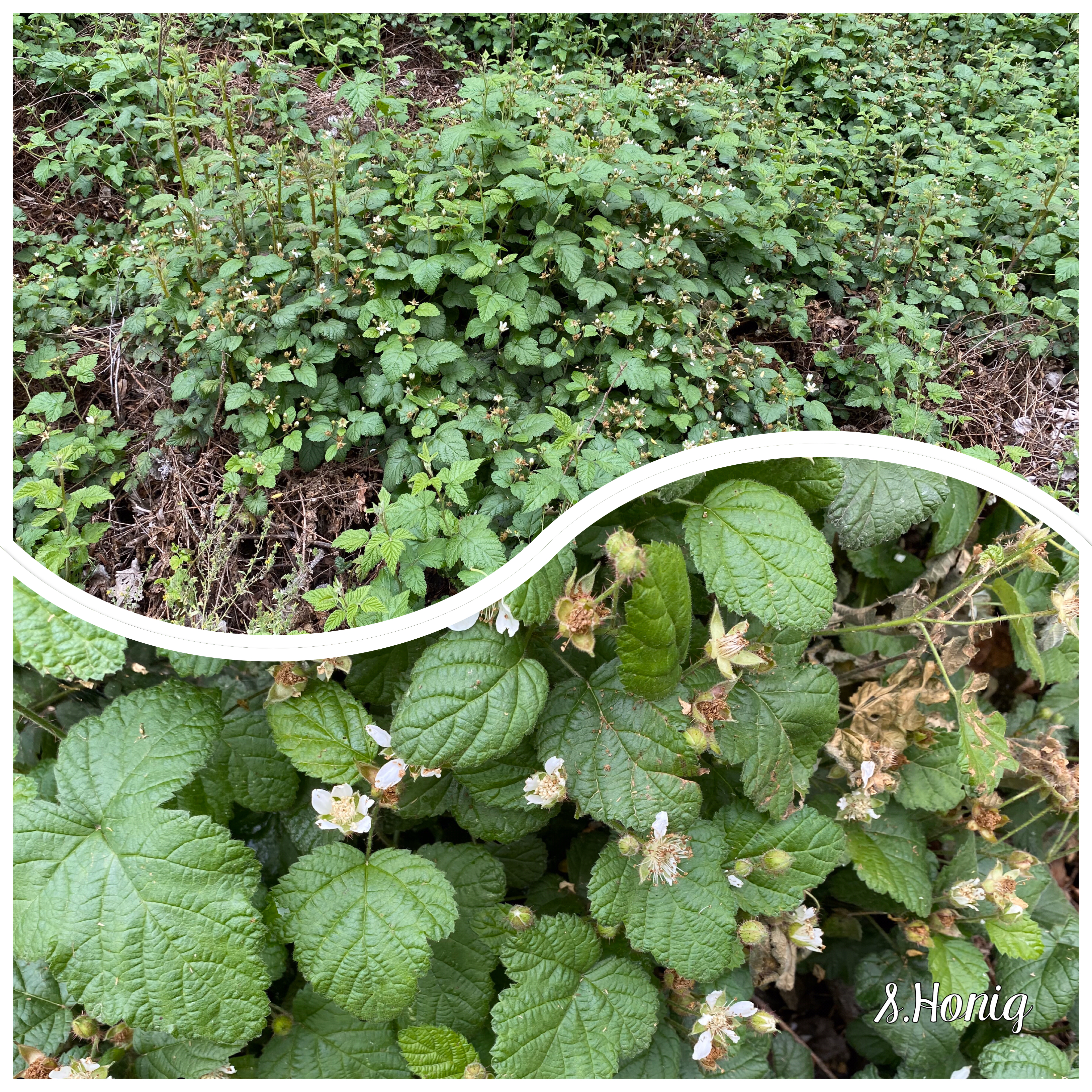
CALIFORNIA/HOARY NETTLE
Also called common/creek nettle, stinging nettle.
Family: URTICACEAE (NETTLE FAMILY), Genus: Urtica, Species: dioica
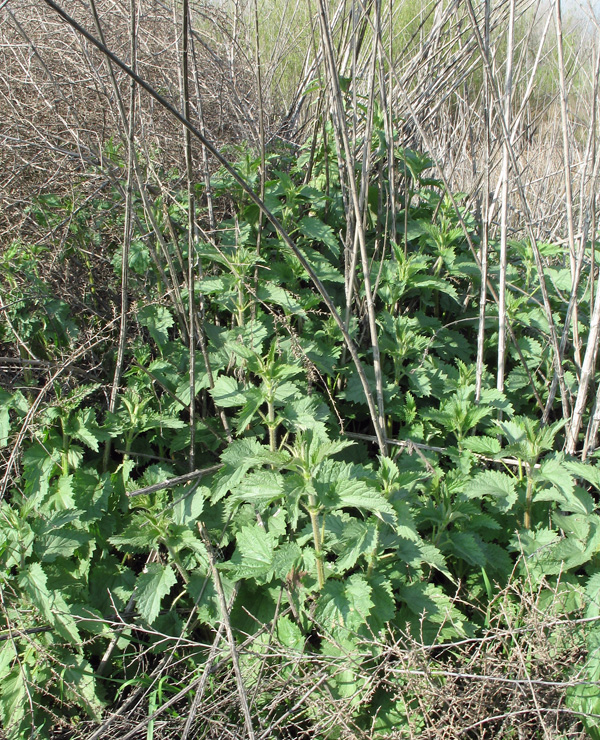
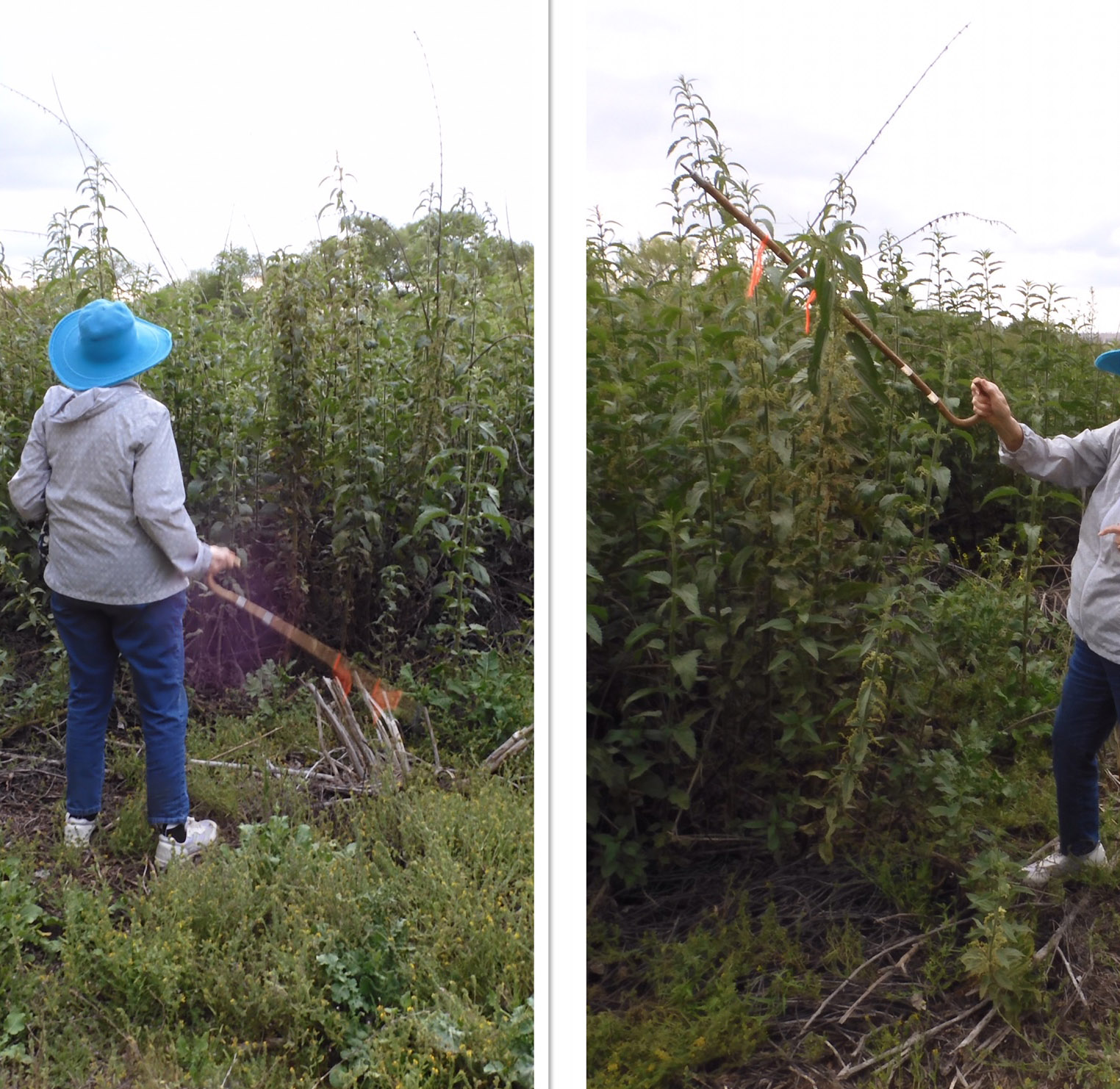
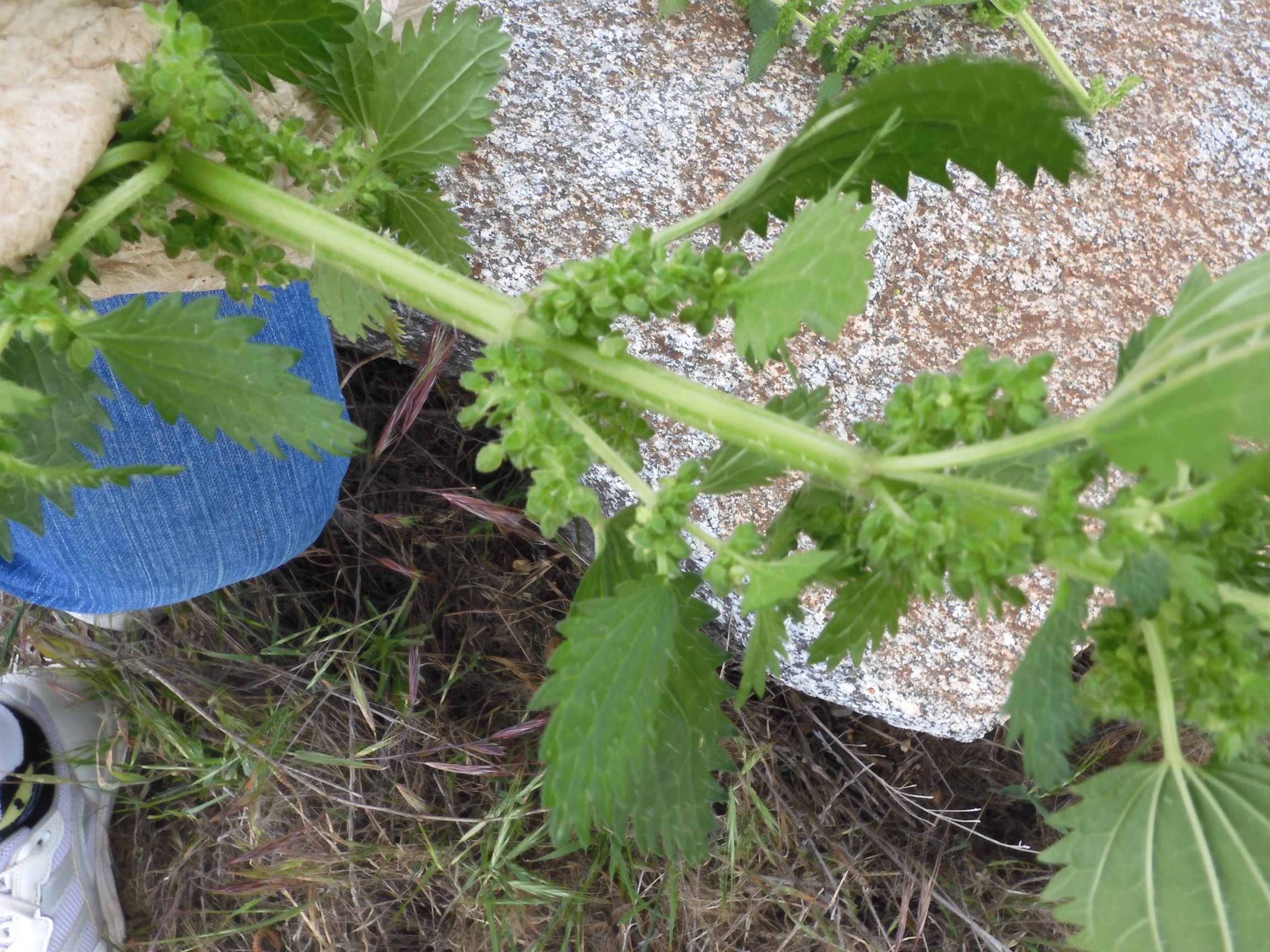
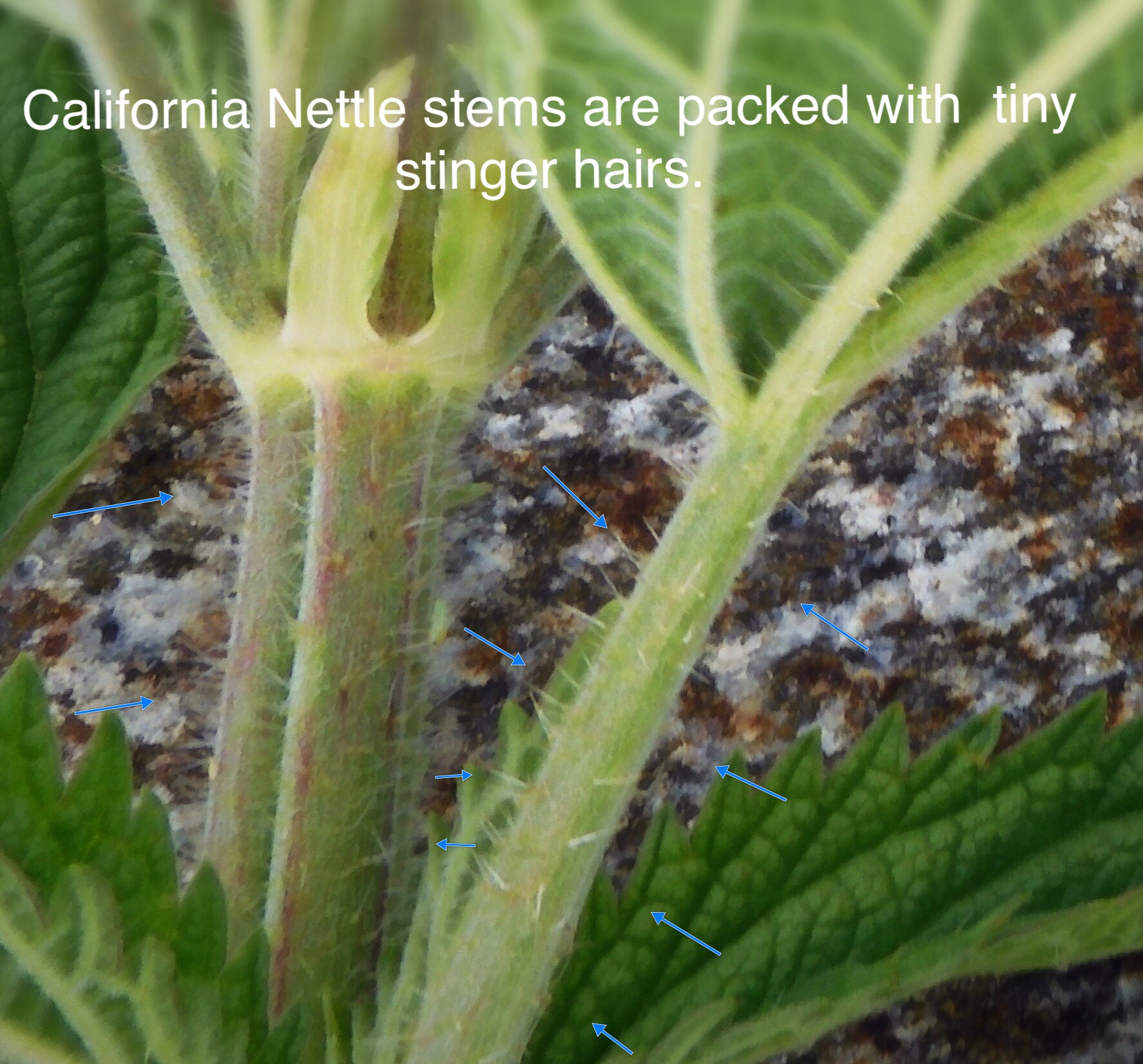
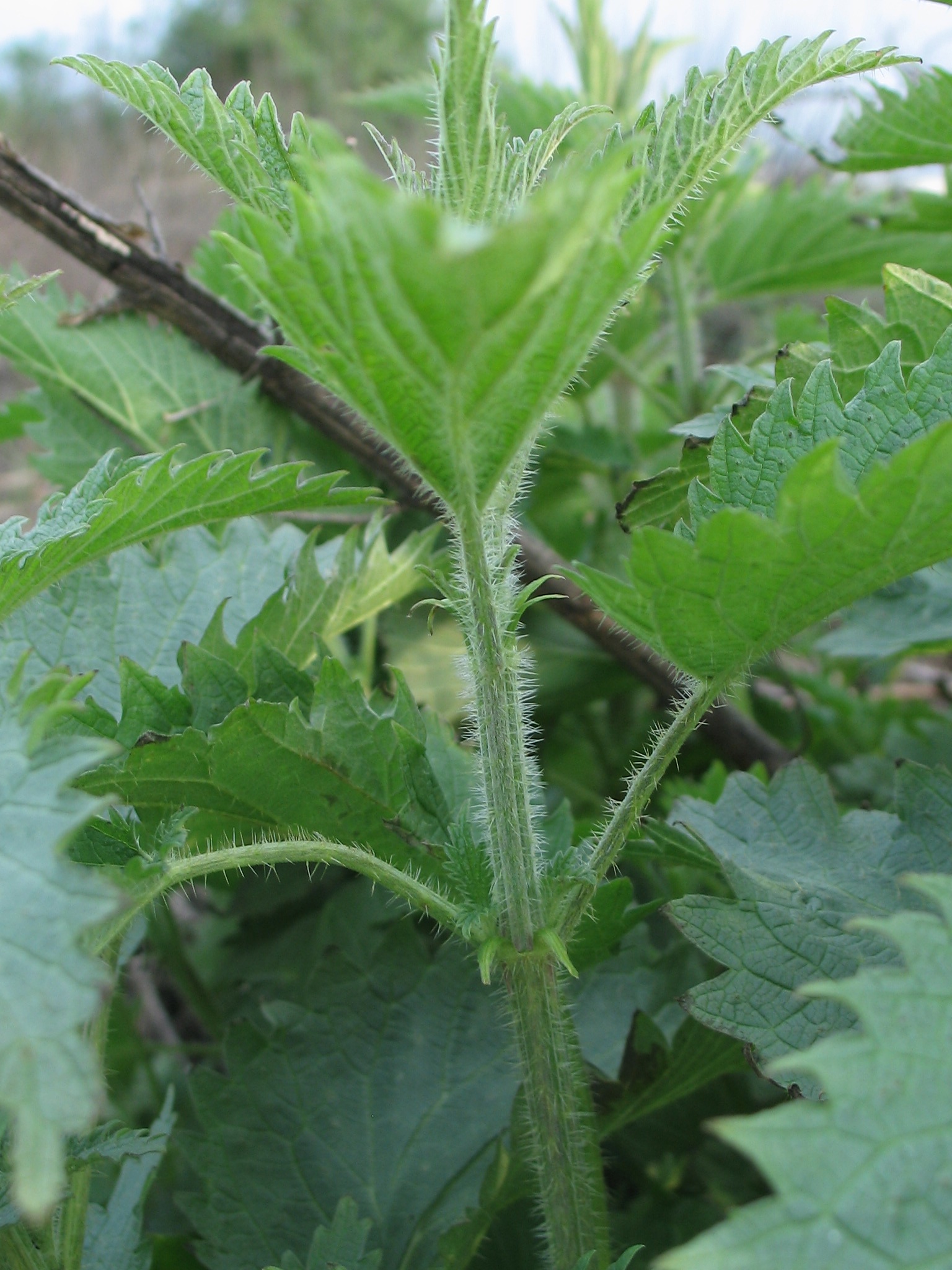
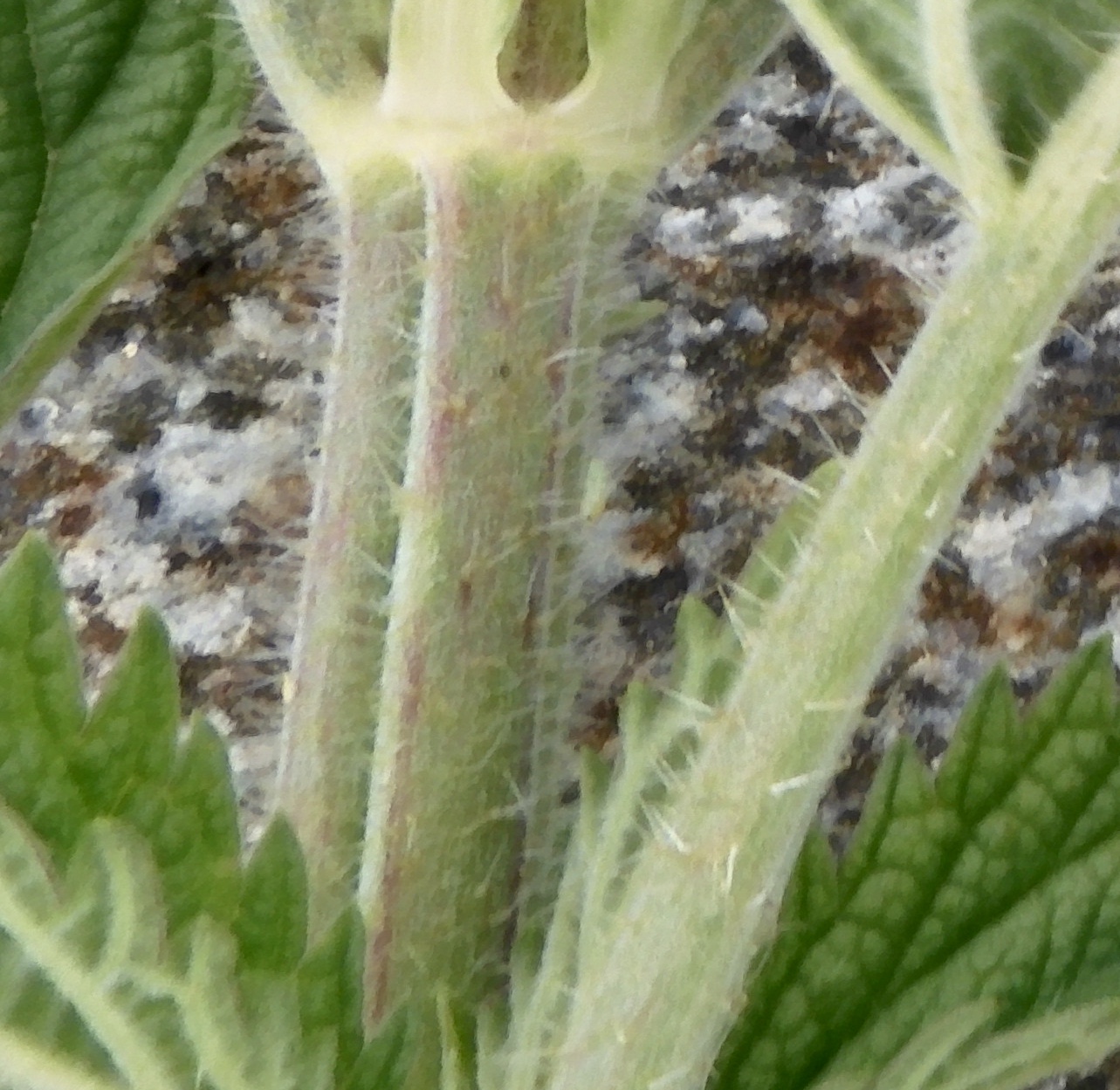
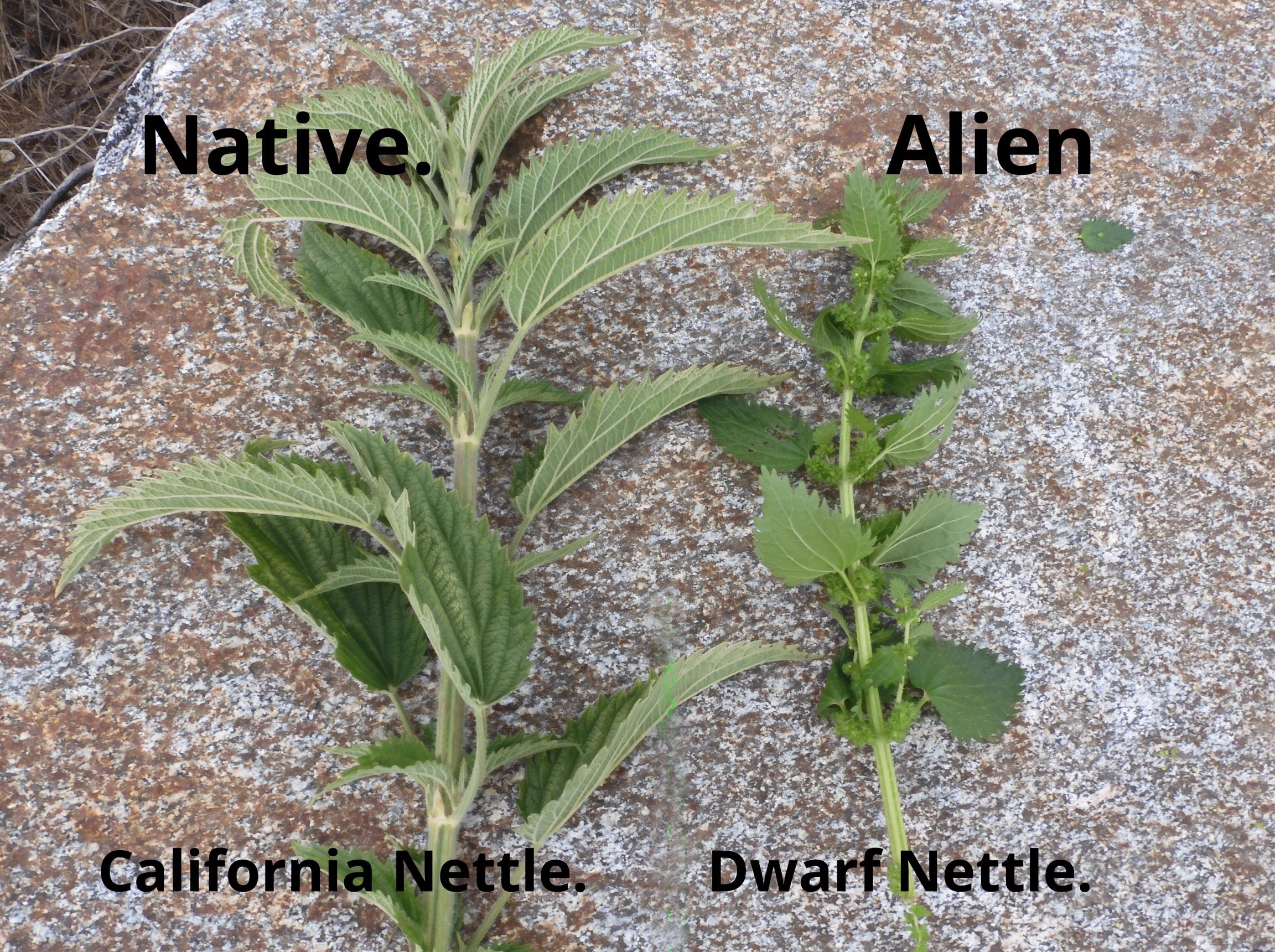
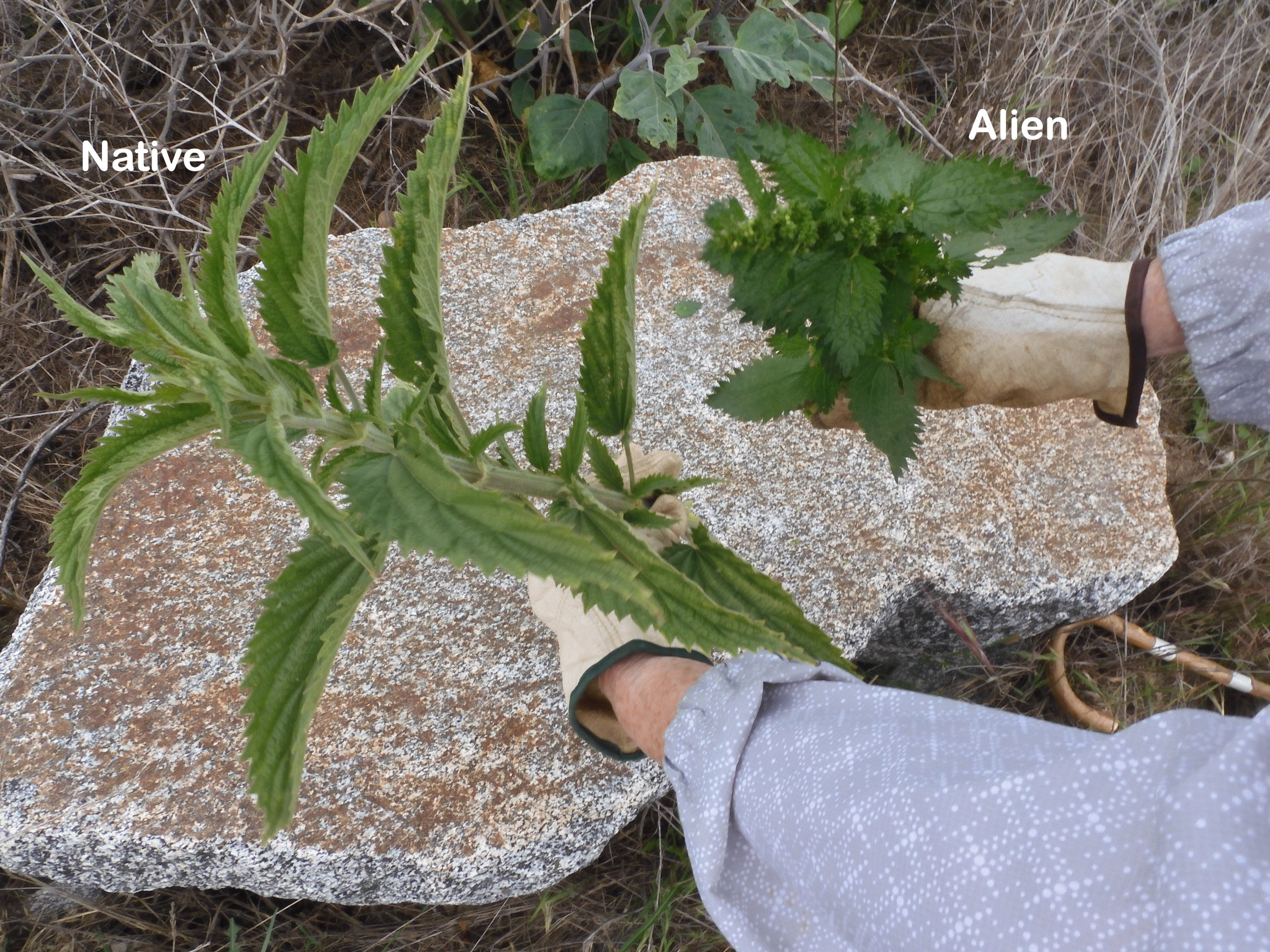
CALIFORNIA WILD GRAPE
Also called Pacific grape
Family: VITACEAE (GRAPE FAMILY), Genus: Vitis, Species: californica
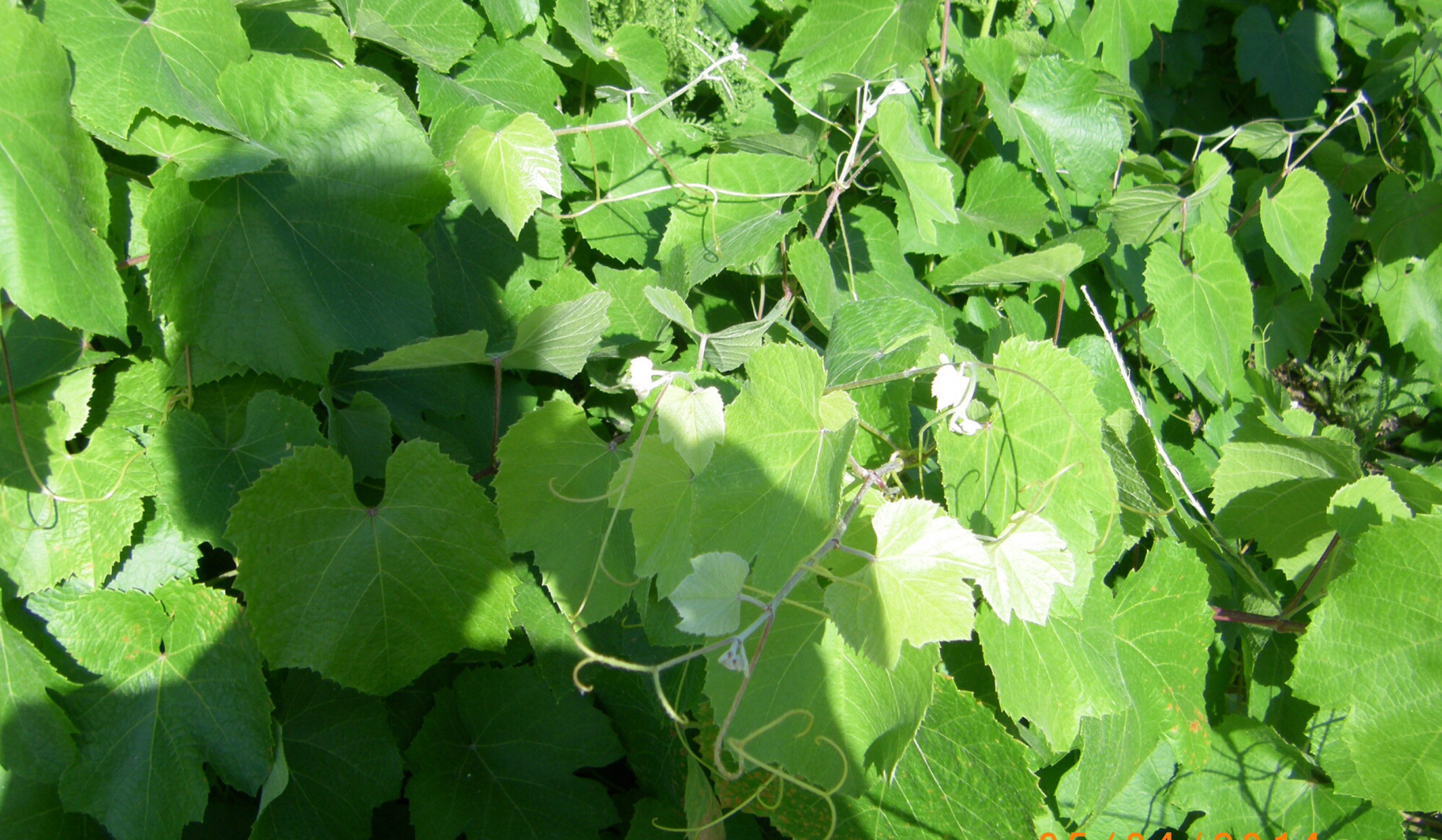
In Spring
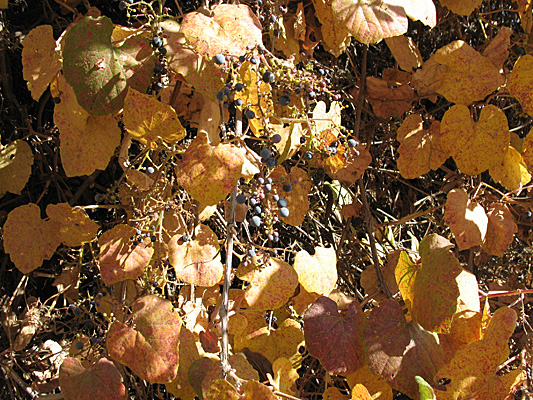
In Fall
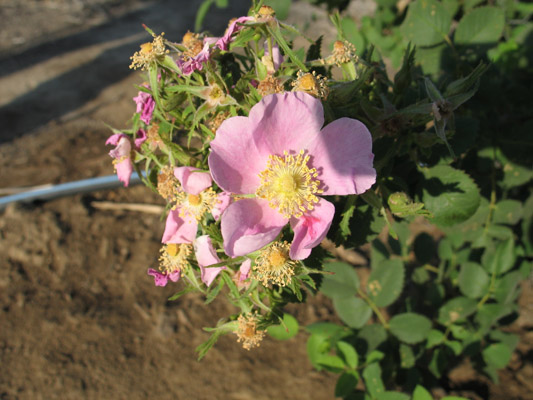
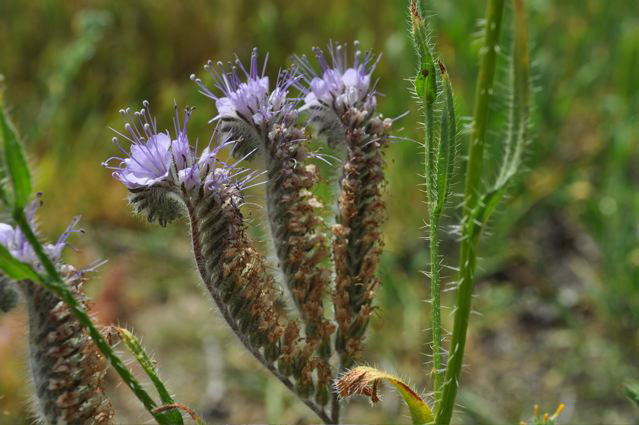
COMMON FIDDLENECK
Also called rancher's fireweed.
Family: BORAGINACEAE (BORAGE FAMILY), Genus: Amsinckia, Species: menziesii
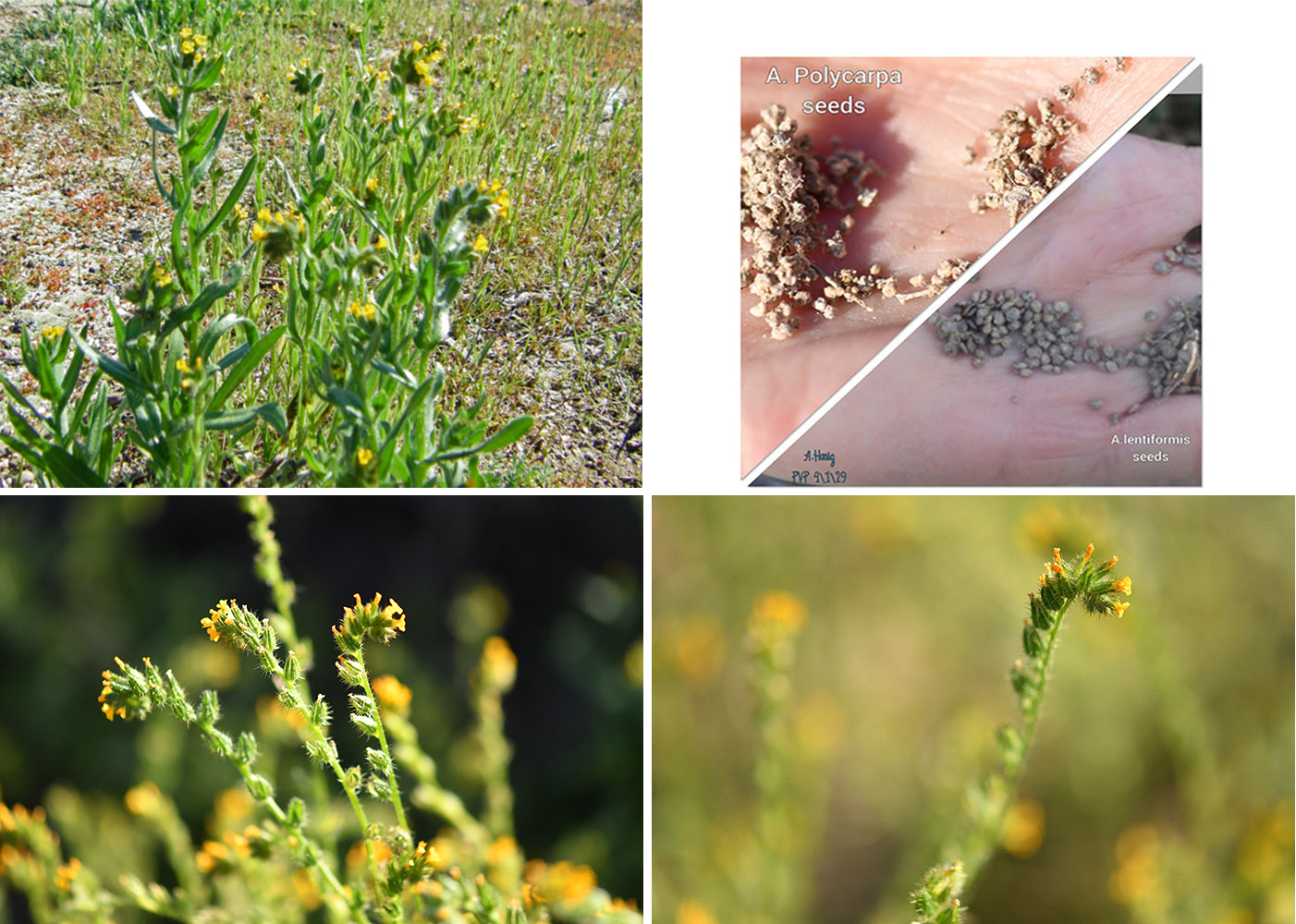
COYOTE MELON a.k.a STINKING GOURD
Also called buffalo gourd, chilicote.
Family: CUCURBITACEAE (GOURD FAMILY), Genus: Cucurbita, Species: foetidissima
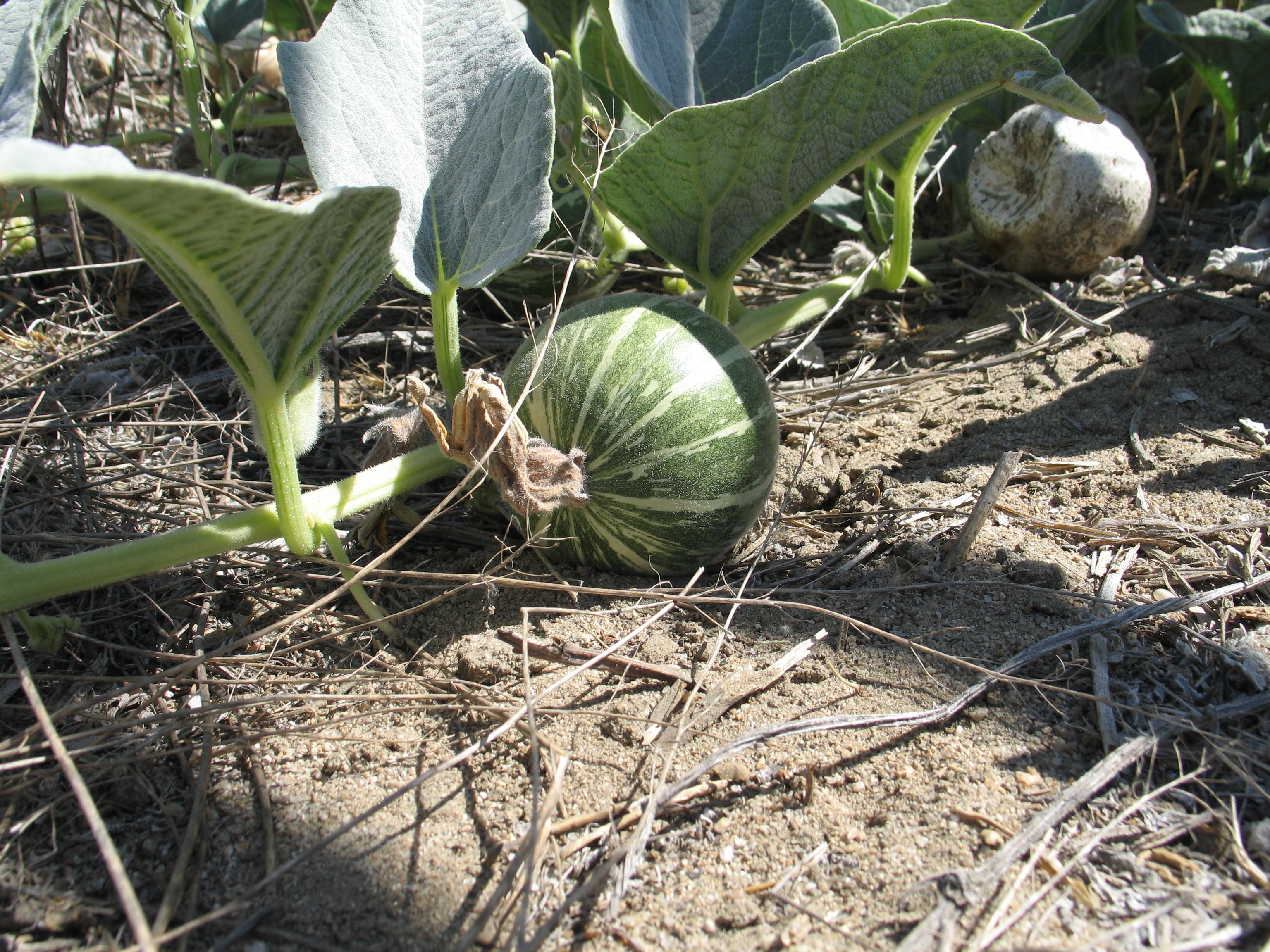
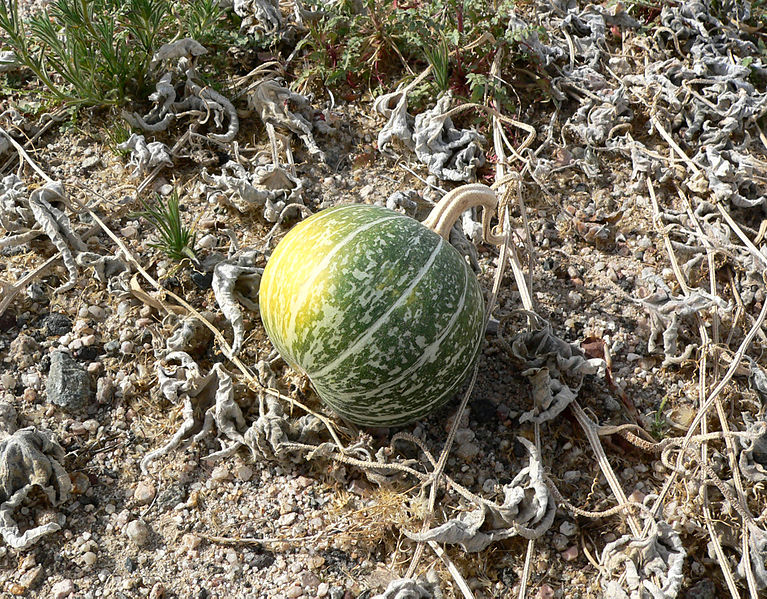
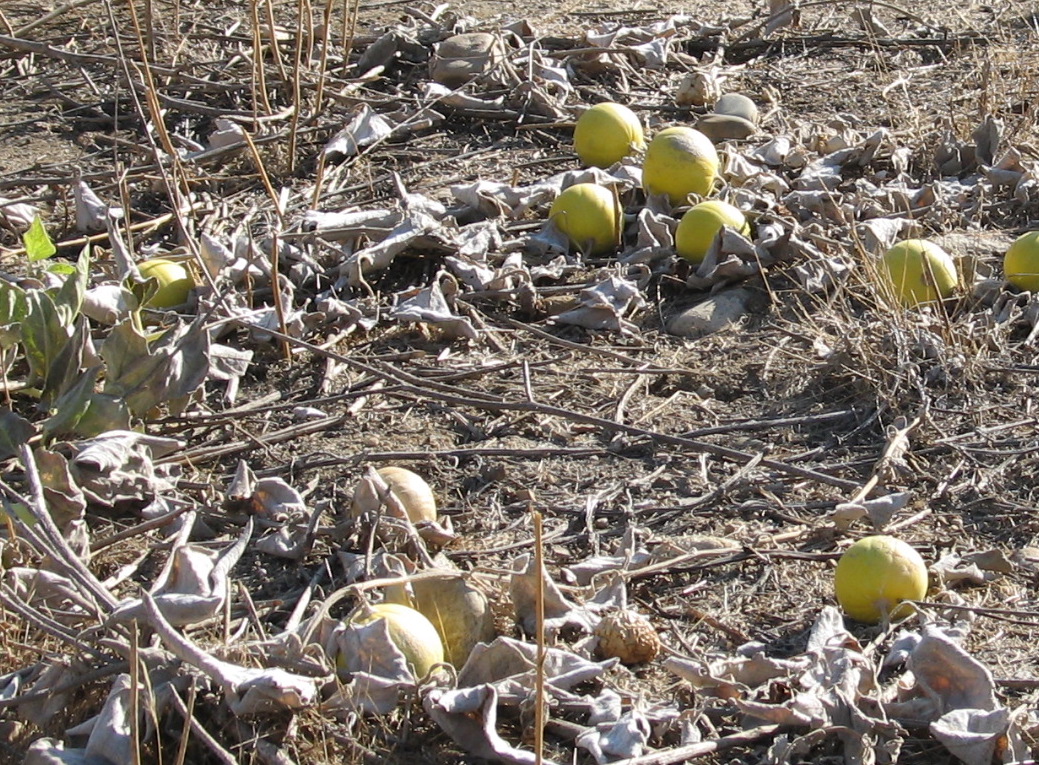
Scattered melons
Unknown how it got the "coyote" name, but I recall that it does have an unpleasant smell.
Fruit: small, green striped globe shaped.
Gourd family. The squash we eat is in this family, but I'm not sure how edible the coyote melon is: one source says it can be eaten when the melon is young, if boiled or roasted. Maybe, maybe not. I’m not volunteering. The dried giordano is brownish and crumbly; kids love to stomp on them and hear them crackle.
This is a perennial vine. Comes up from the root every year. Flies go to the blossoms as do honey bees.
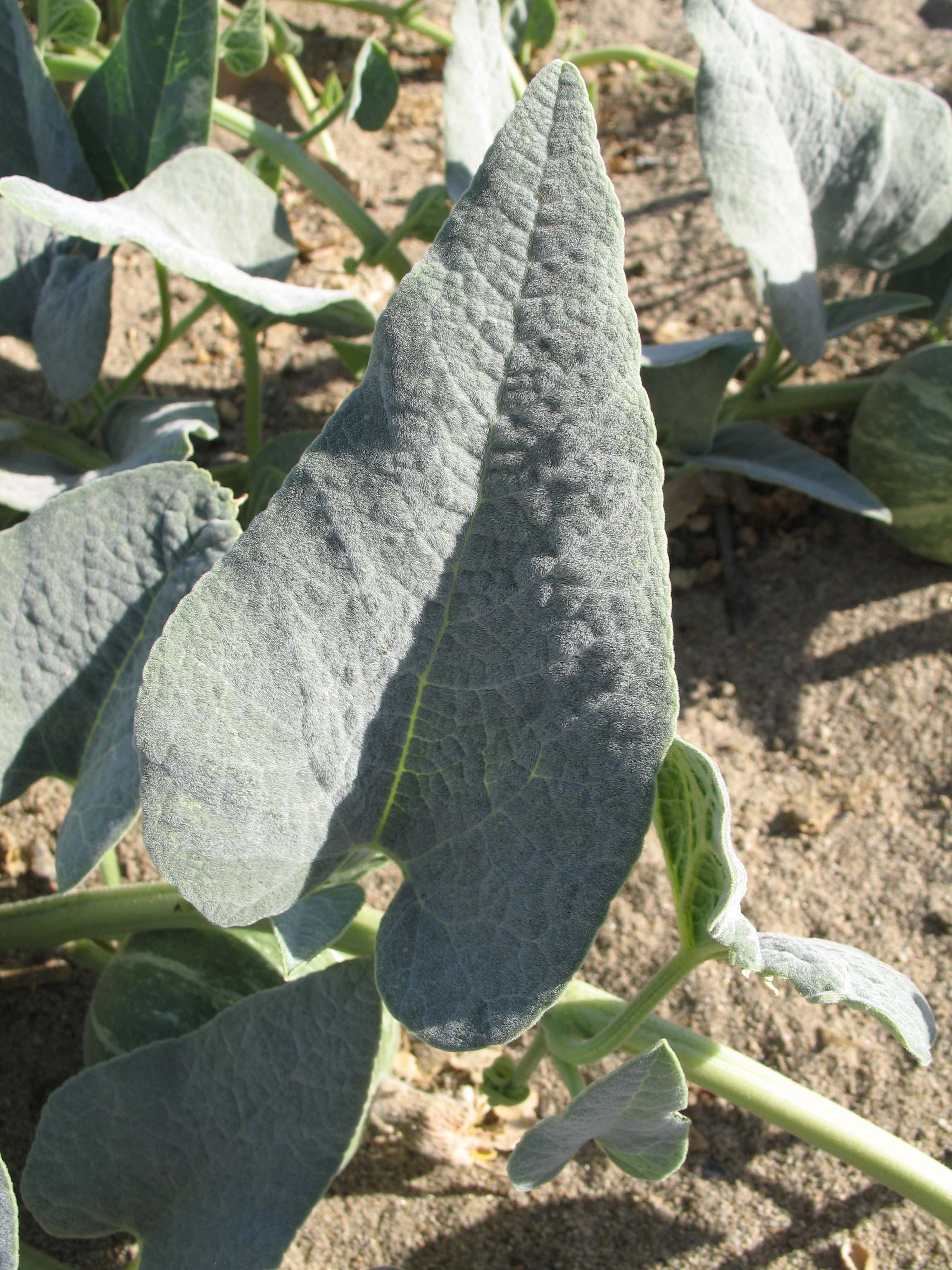
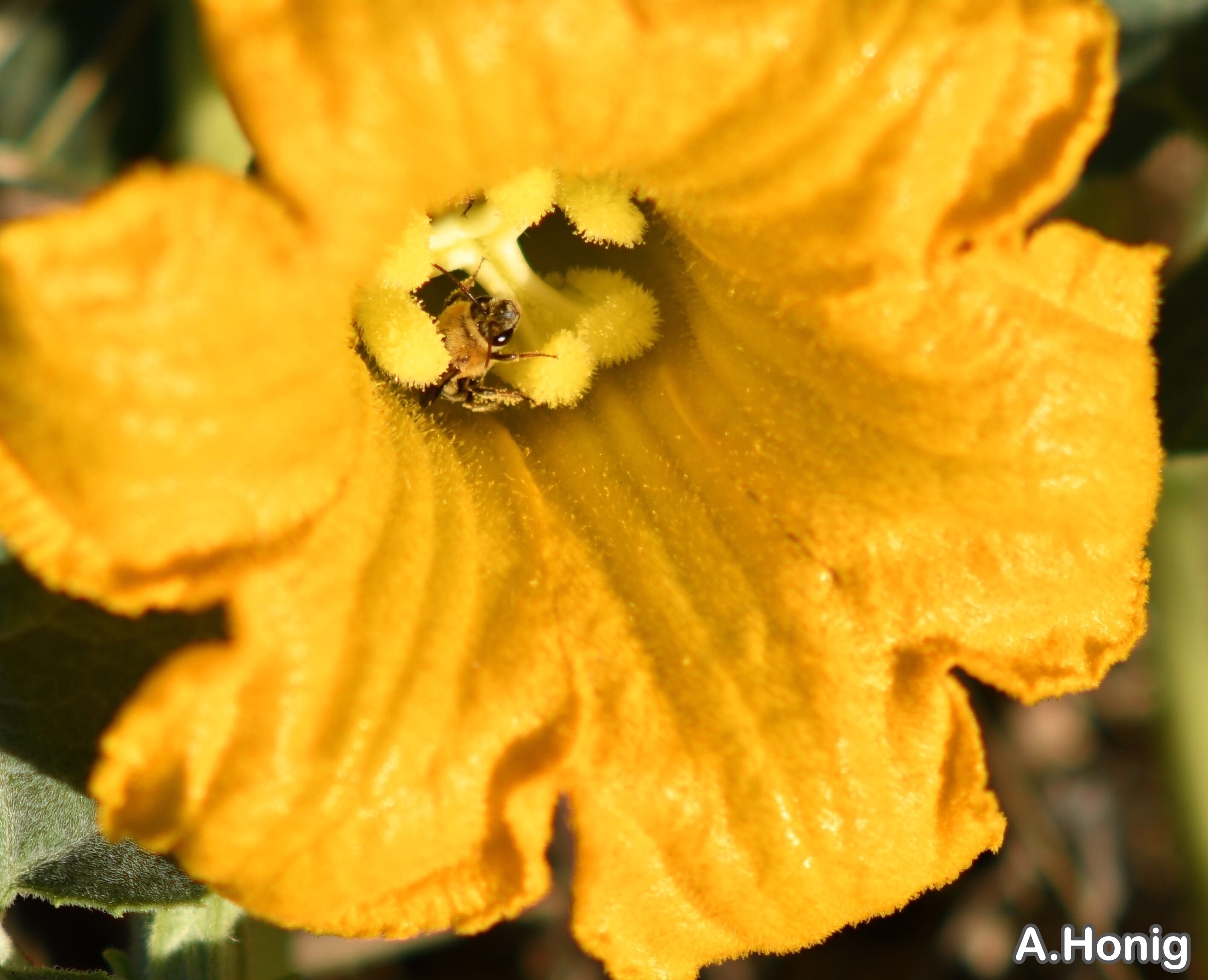
Bee visiting coyote melon flower
EMORYI
Also called desert lavender.
Family: LAMIACEAE (LABIATAE) (MINT FAMILY), Genus: Condea, Species: emoryi
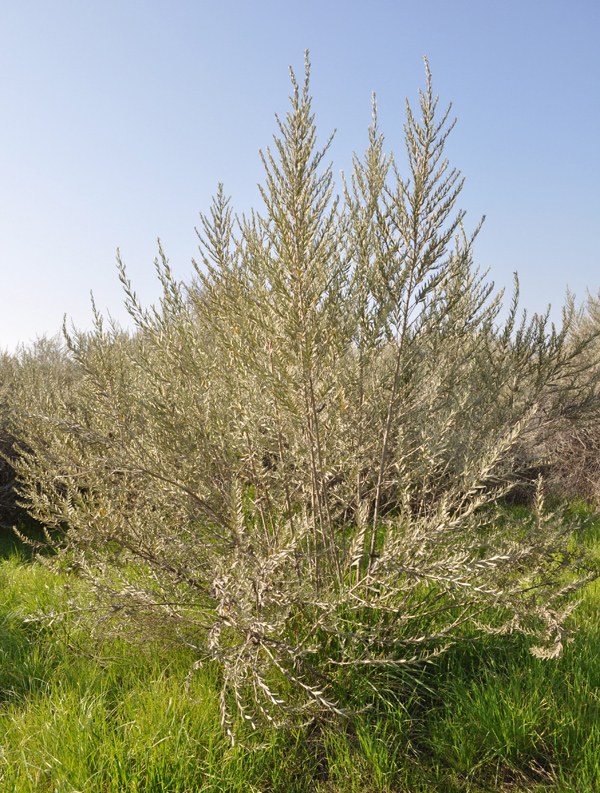
FREMONT COTTONWOOD
Also called alamo cottonwood.
Family: SALICACEAE (WILLOW FAMILY), Genus: Populus, Species: fremontii
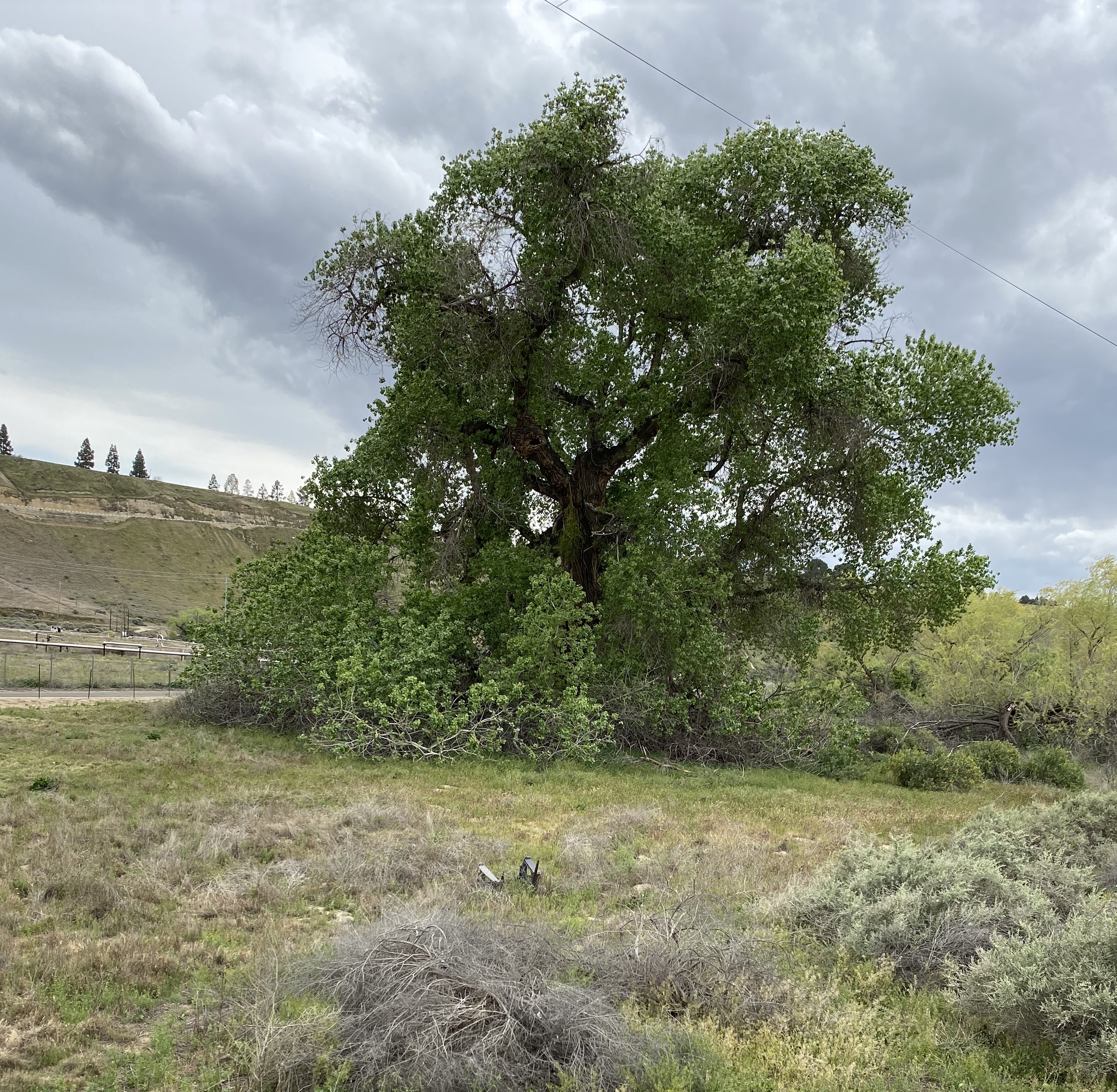
HELIOTROPE
Family: BORAGINACEAE (BORAGE FAMILY), Genus: Heliotropium, Species: arborescens
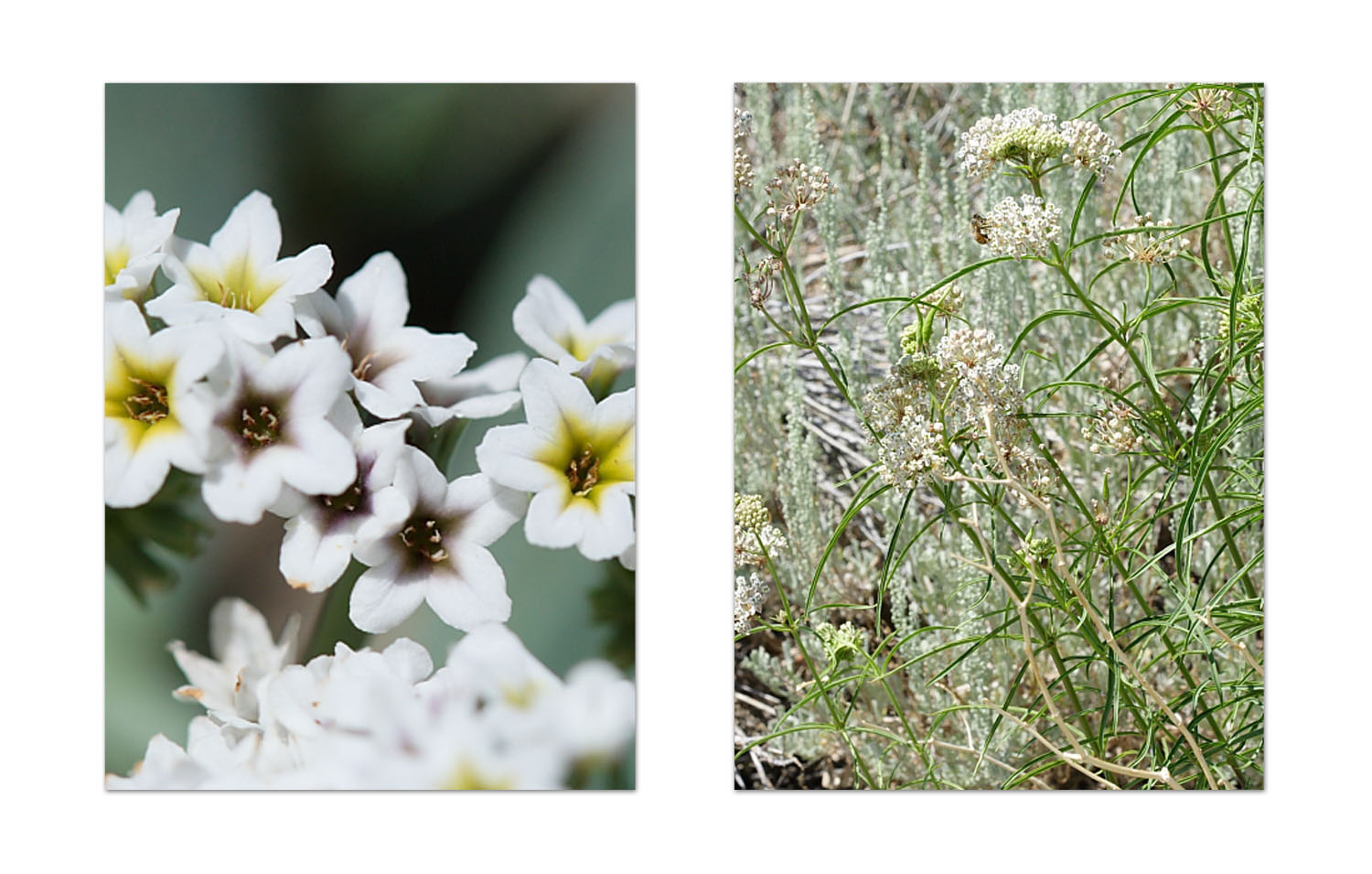
INDIAN TOBACCO
Family: SOLANACEAE (NIGHTSHADE FAMILY), Genus: Nicotiana, Species: N. quadrivalis var. bigelowii
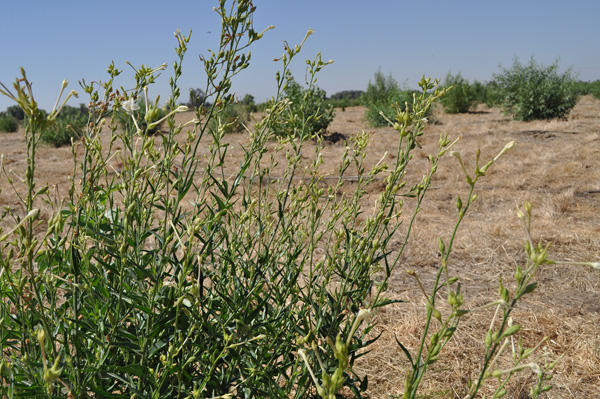
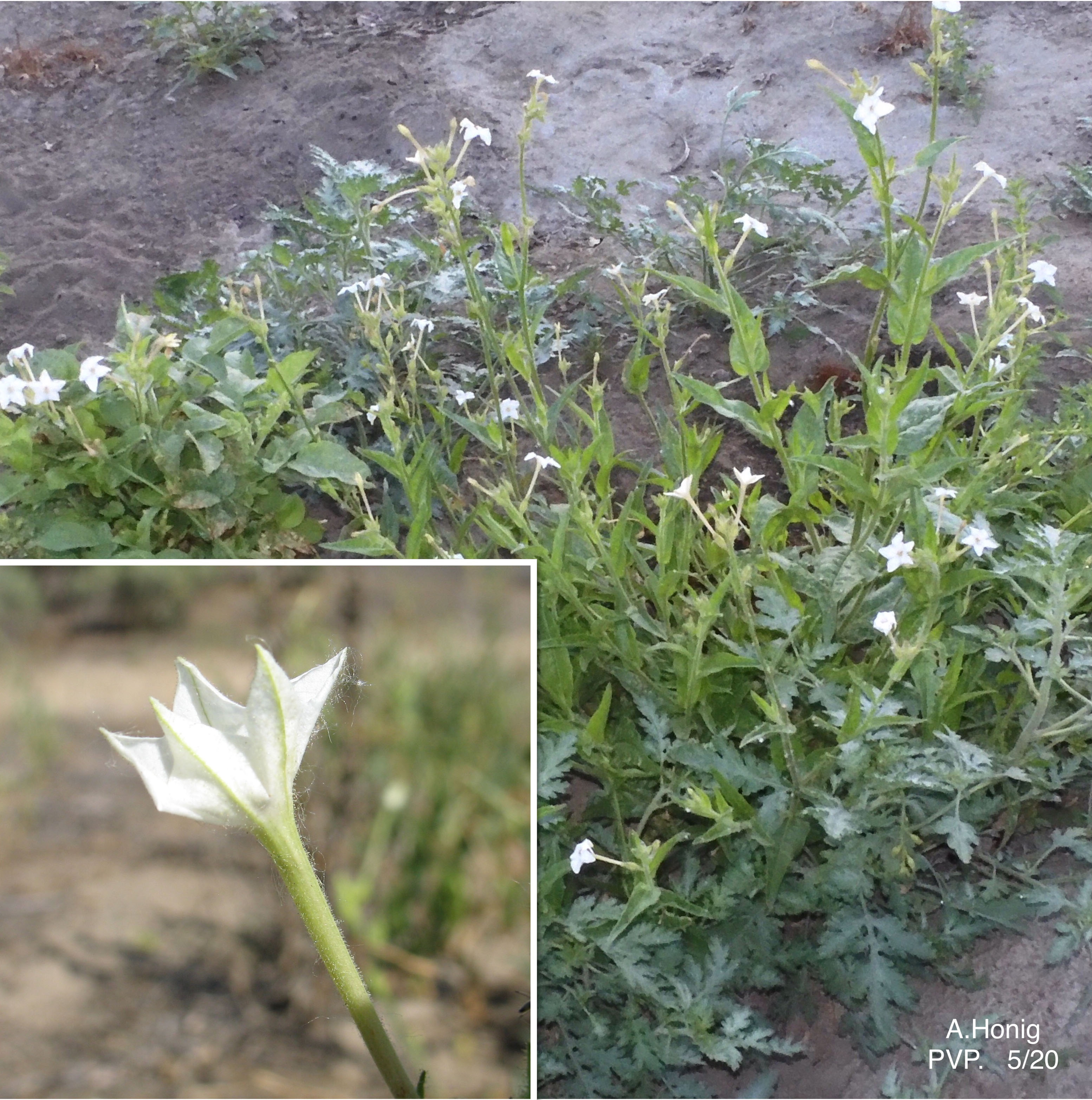
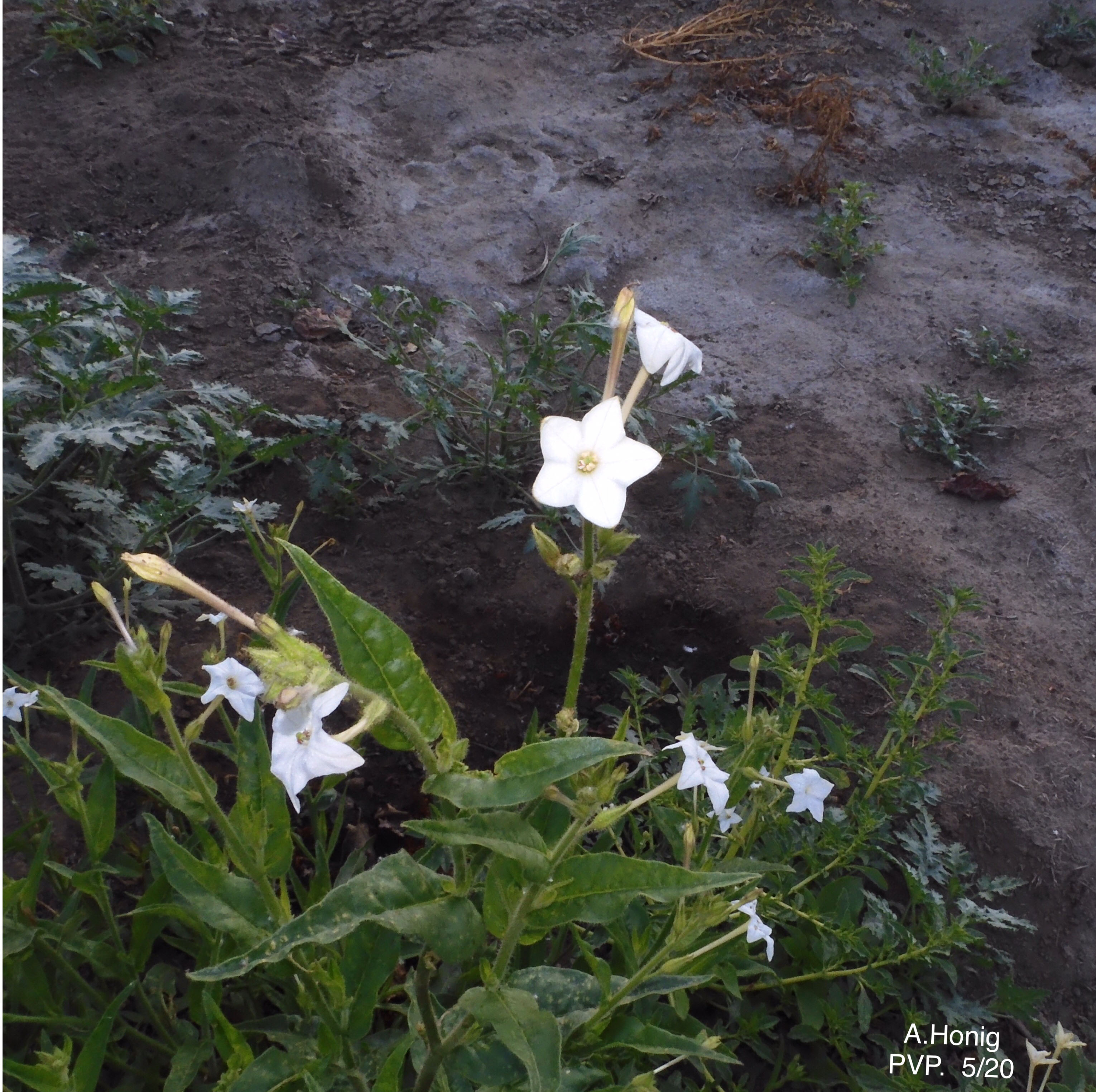
A California native annual, it is in the Nightshade family along with the deadly Datura and more benign tomatoes, potatoes, and eggplants.
This grows to about 4’ high and has numerous white tubular blossoms. The blossoms stay open after dusk. Hummingbirds visit by day while night-flying species of Sphinx moths may do so after dark. Very long tongues allow these moths to reach nectar deep within the flower. Here is a good video showing such a moth at action. https://youtu.be/SZhRuo1CPq8
Indian tobacco is so called because of its great importance in traditional California Indian culture. In local Yokuts mythology, for instance, it was with the discovery of tobacco that earth could be created; previously there was only water and no land. Like most California Indians, Yokuts gathered it in the wild. They smoked dried leaves on sacred occasions and believed it gave them wisdom and power. It was when Hawk was “made wise” by smoking tobacco that he was able to put the Sierra Nevada where it is. Tobacco was also used medicinally and socially.
Another “Indian tobacco“ Can be found along the river which is called Tree tobacco (N. glauca). It is not a native.
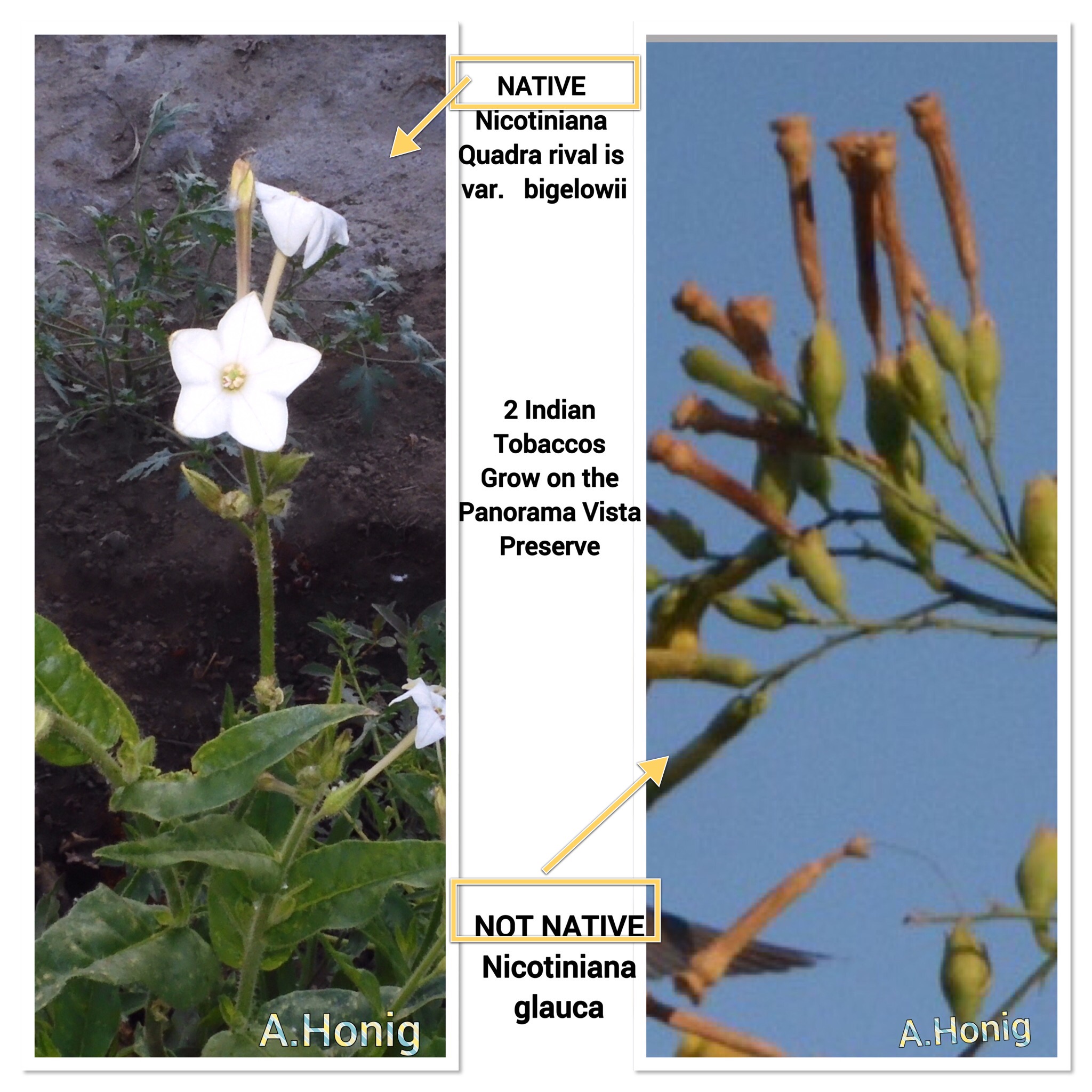
MULE FAT
Also called seepwillow, water-wally.
Family: ASTERACEAE (COMPOSITAE) (SUNFLOWER FAMILY), Genus: Baccharis, Species: salicifolia
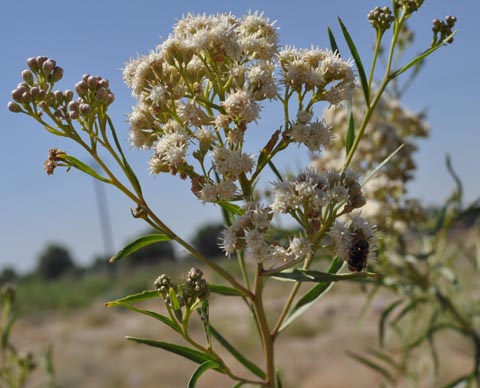
NARROW LEAF MILKWEED
Also called Mexican whorled milkweed.
Family: APOCYNACEAE (DOGBANE FAMILY), Genus: Asclepias, Species: fascicularis
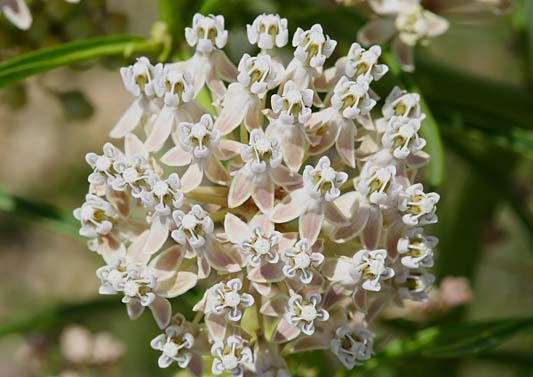
NARROW LEAF WILLOW
Also called sandbar/coyote willow
Family: SALICACEAE (WILLOW FAMILY), Genus: Salix, Species: exigua
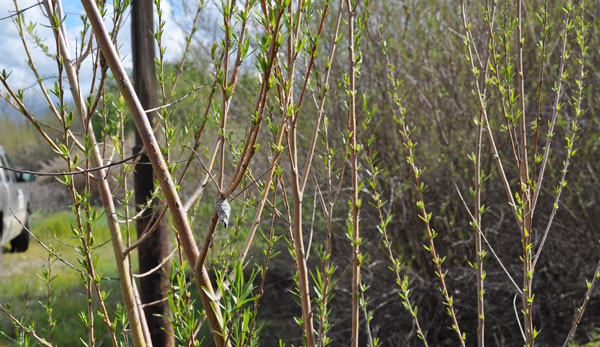
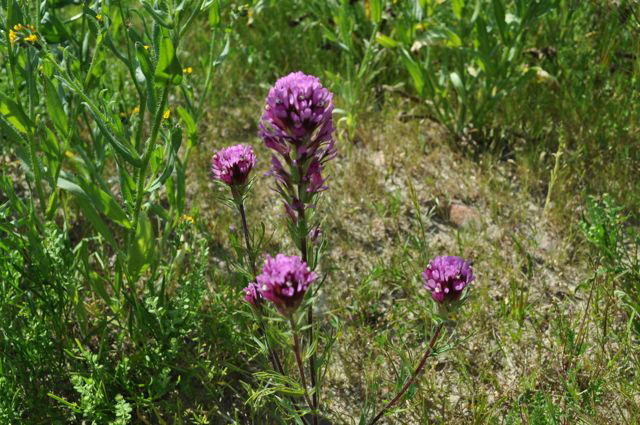
PYGMY WEED
Also called sand pygmyweed.
Family: CRASSULACEAE (STONECROP FAMILY) Genus: Crassula, Species: connata
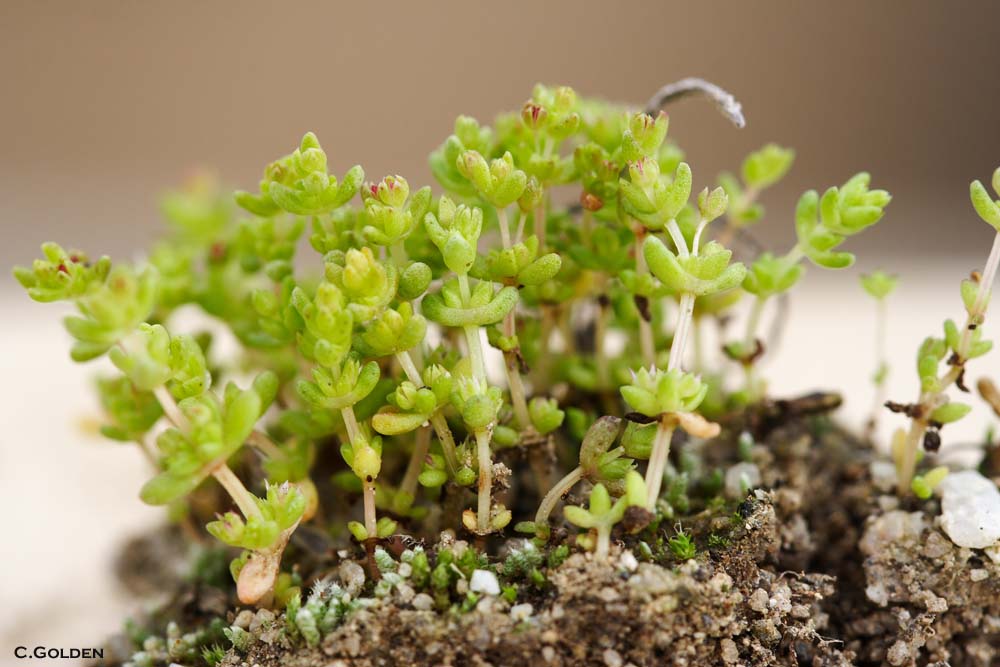
SAGEBRUSH
Also called California mugwort, Douglas's sagewort.
Family: ASTERACEAE (COMPOSITAE) (SUNFLOWER FAMILY), Genus: Artemisia, Species: douglasiana
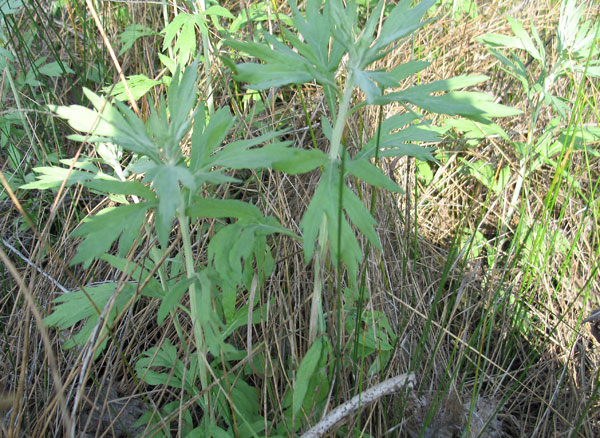
SALT GRASS
Also called desert saltgrass, inland saltgrass, seashore saltgrass.
Family: POACEAE (GRASS FAMILY), Genus: Distichlis, Species: spicata
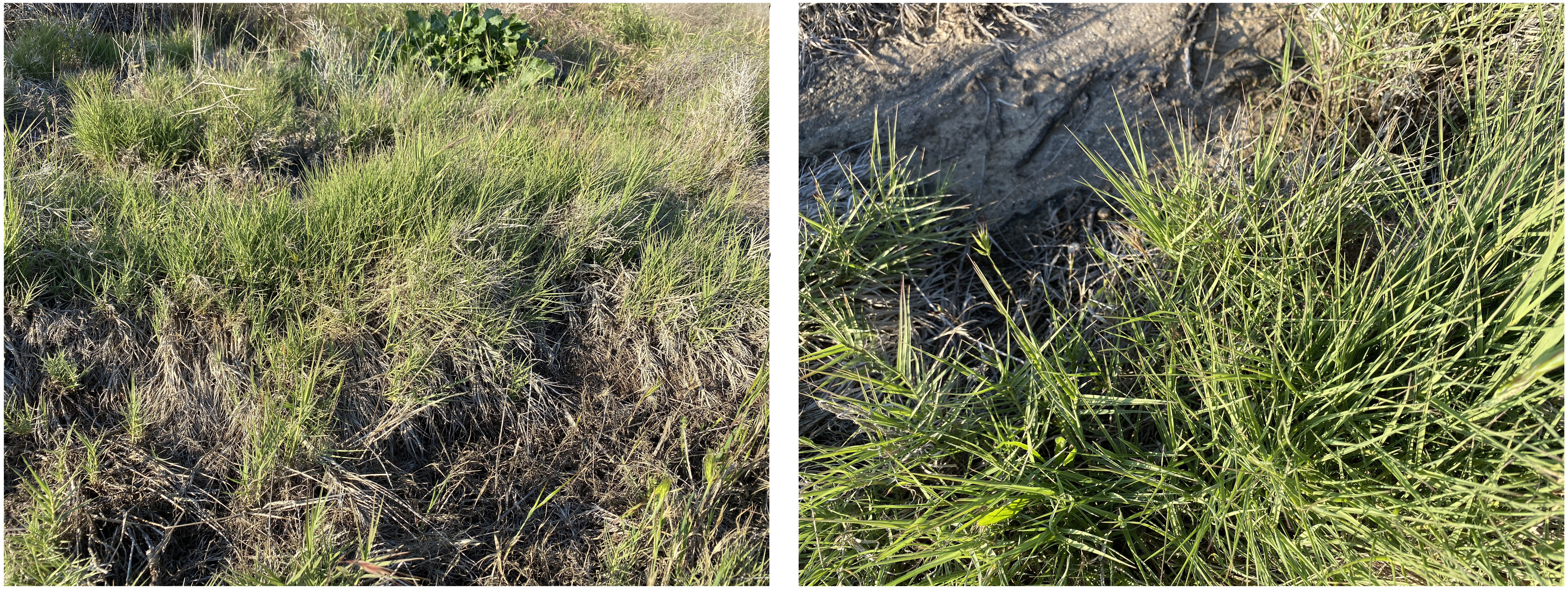
SHINING PEPPERWEED
Family: BRASSICACEAE (CRUCIFERAE)(MUSTARD FAMILY) Genus: Lepidium, Species: nitidum
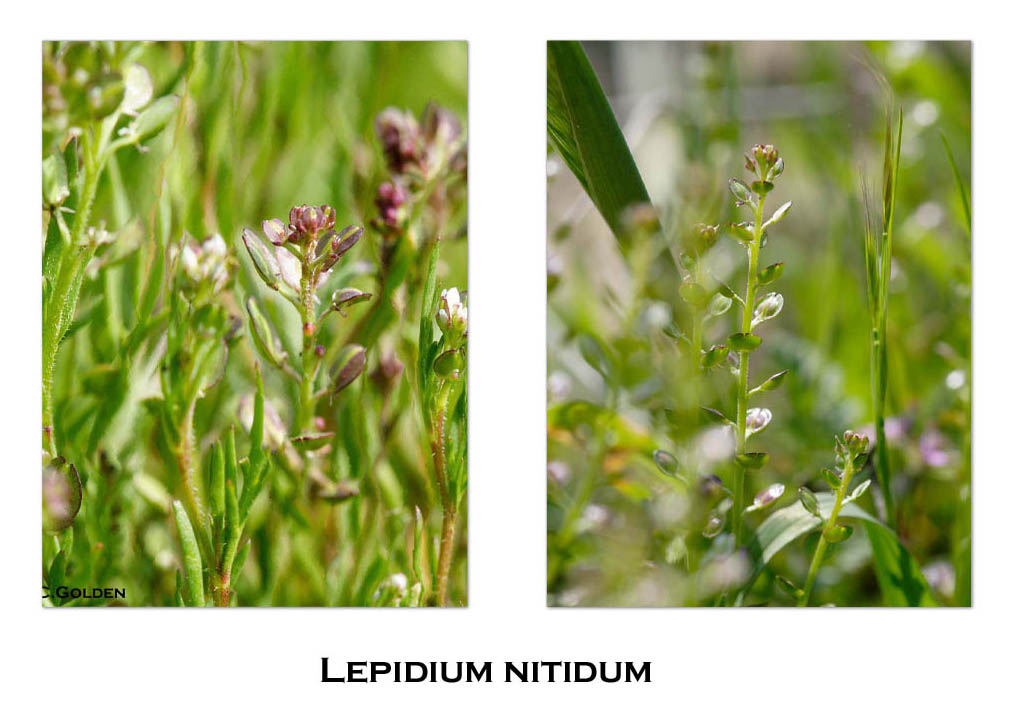
SKY LUPINE
Family: FABACEAE (LEGUMINOSAE) (PEA FAMILY), Genus: Lupinus, Species: nanus
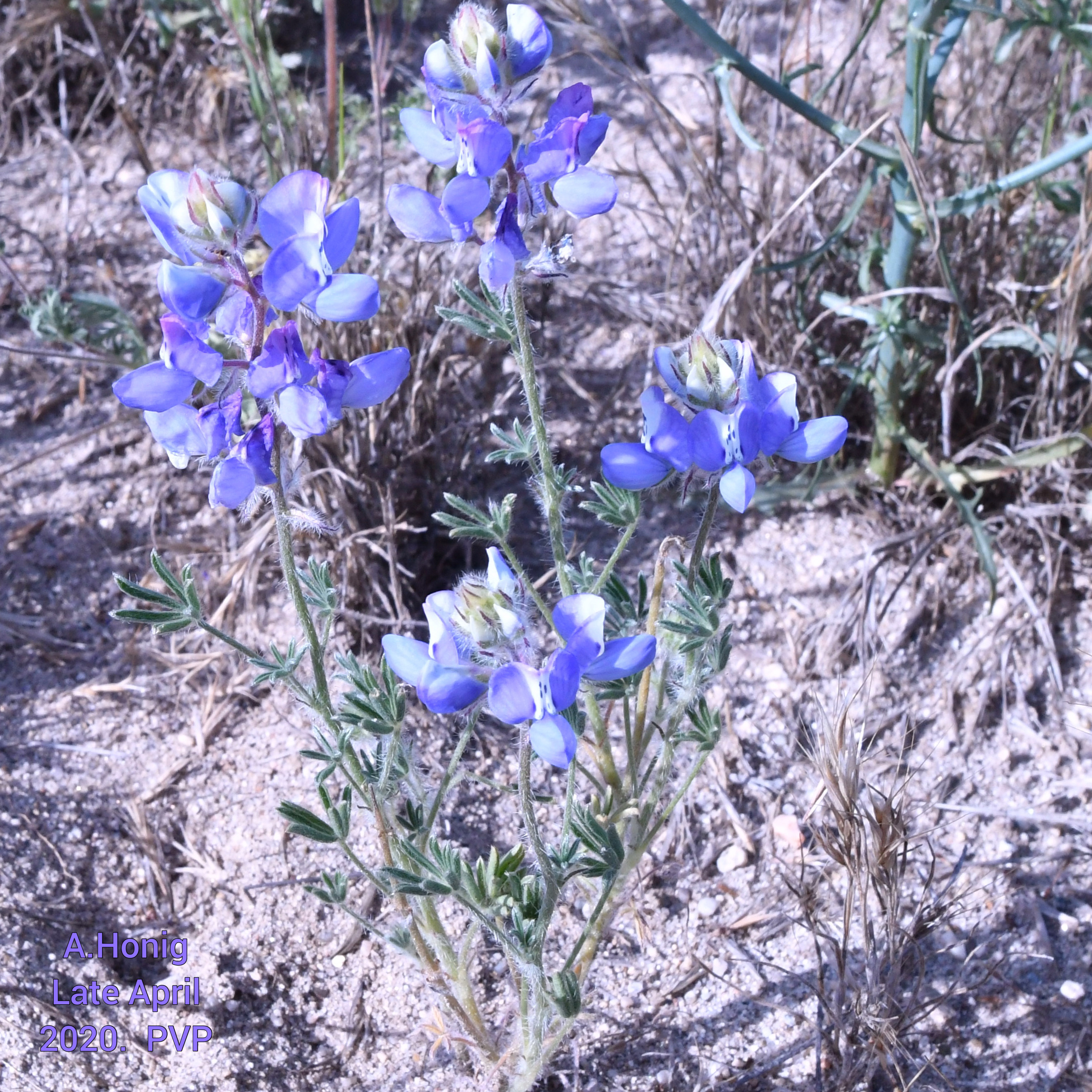
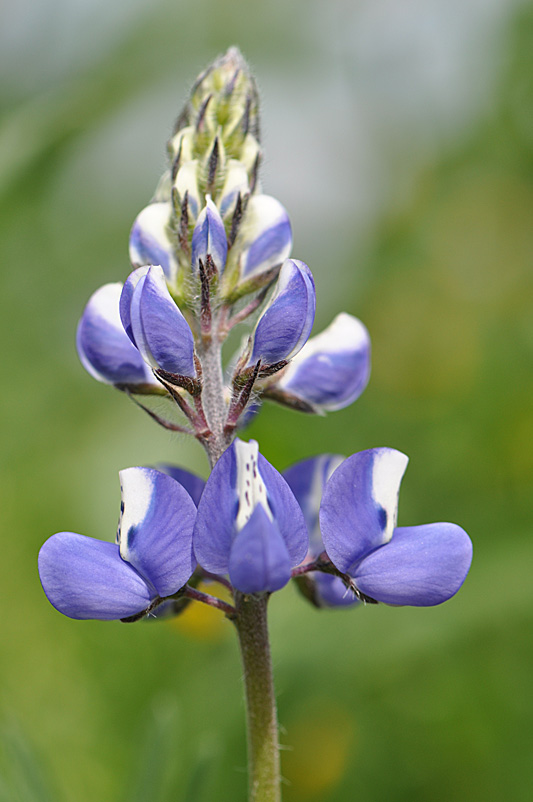
SLENDER CATTAIL
Also called lesser bulrush, narrowleaf cattail, lesser reedmace.
Family: TYPHACEAE (CATTAIL FAMILY), Genus: Typha, Species: angustifolia
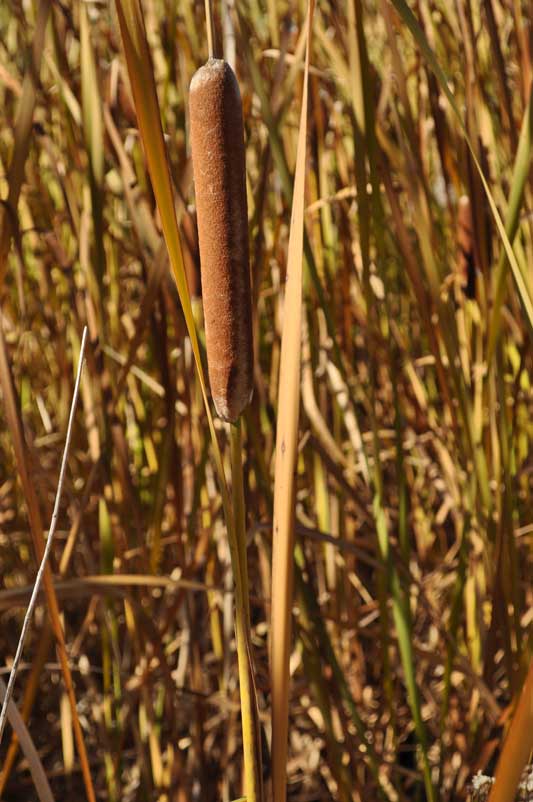
TELEGRAPH WEED
Also called silk-grass goldenaster.
Family: ASTERACEAE (COMPOSITAE) (SUNFLOWER FAMILY), Genus: Heterotheca, Species: grandiflora
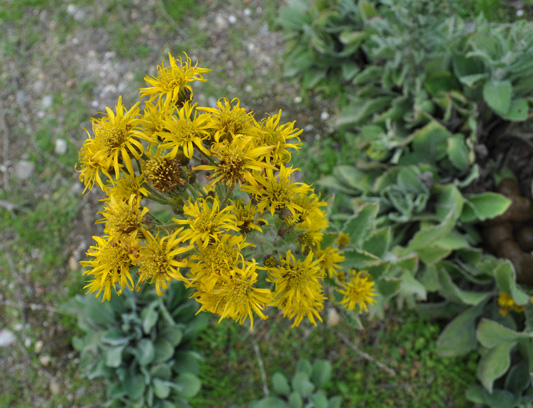
WESTERN SYCAMORE
Left: California/western sycamore in Fall, right: sycamore female blossom string (early Spring)
Family: PLATANACEAE (SYCAMORE FAMILY), Genus: Platanus, Species: racemosa
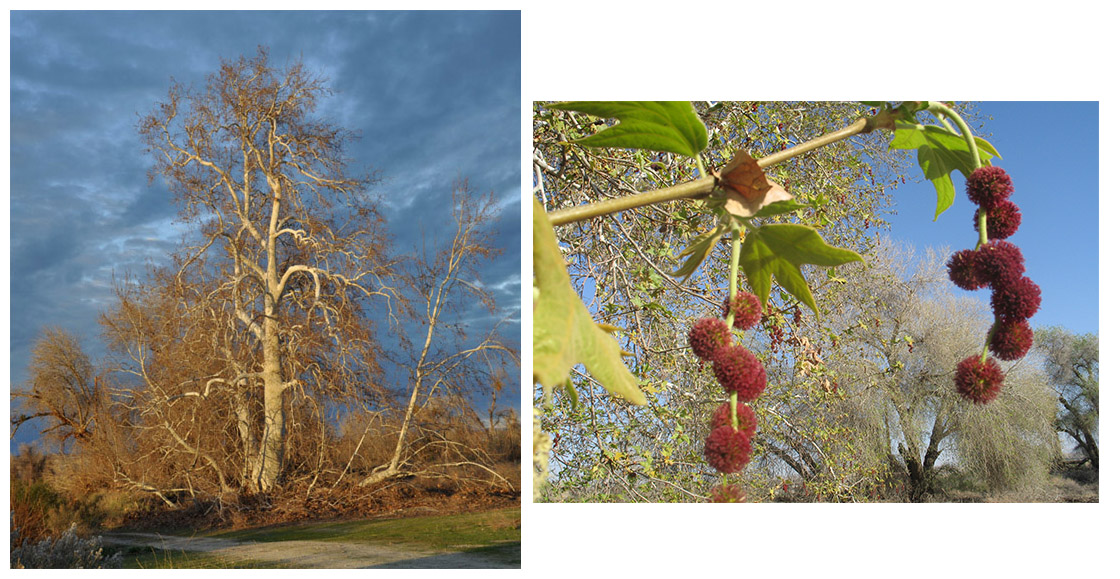
WESTERN JIMSONWEED
Also called datura, thorn-apple.
Family: SOLANACEAE (NIGHTSHADE FAMILY), Genus: Datura, Species: wrightii
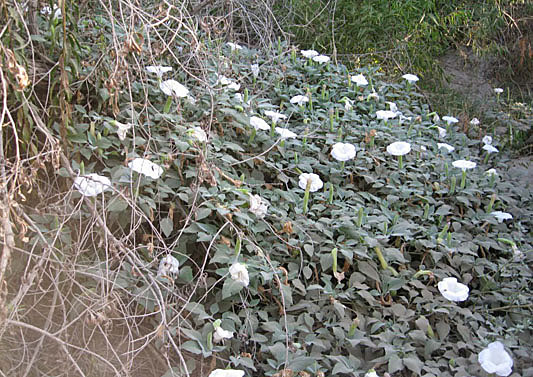
WINGED COMBSEED
Also called sleeping/shortleaf/hairy-leaved combseed.
Family: BORAGINACEAE (BORAGE FAMILY), Genus: Pectocarya, Species: penicillata
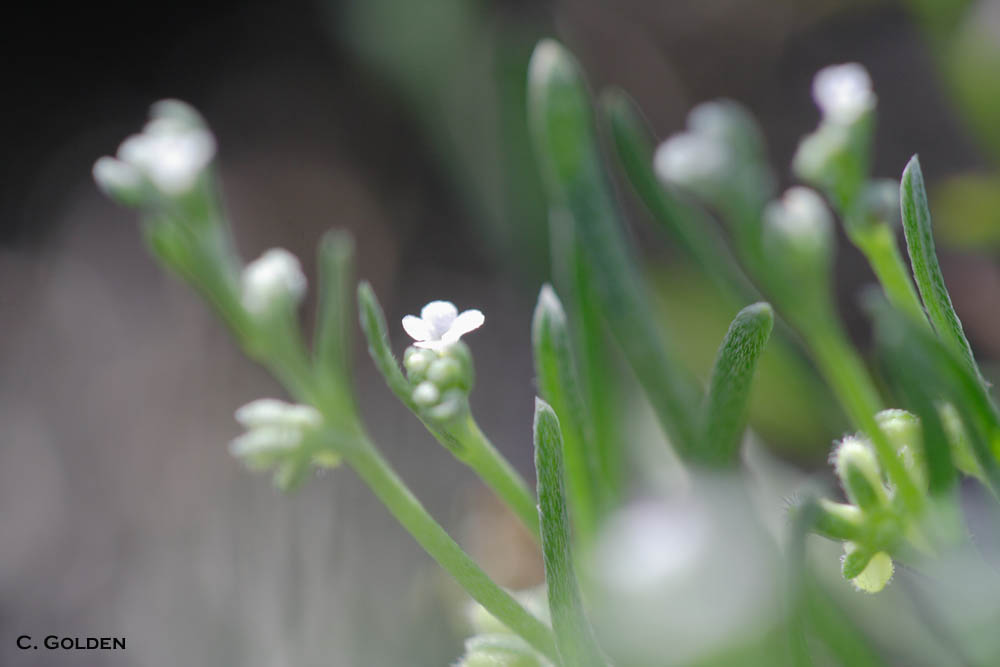
WILD LICORICE
Family: FABACEAE (LEGUMINOSAE) (PEA FAMILY), Genus: Glycyrrhiza, Species: lepidota
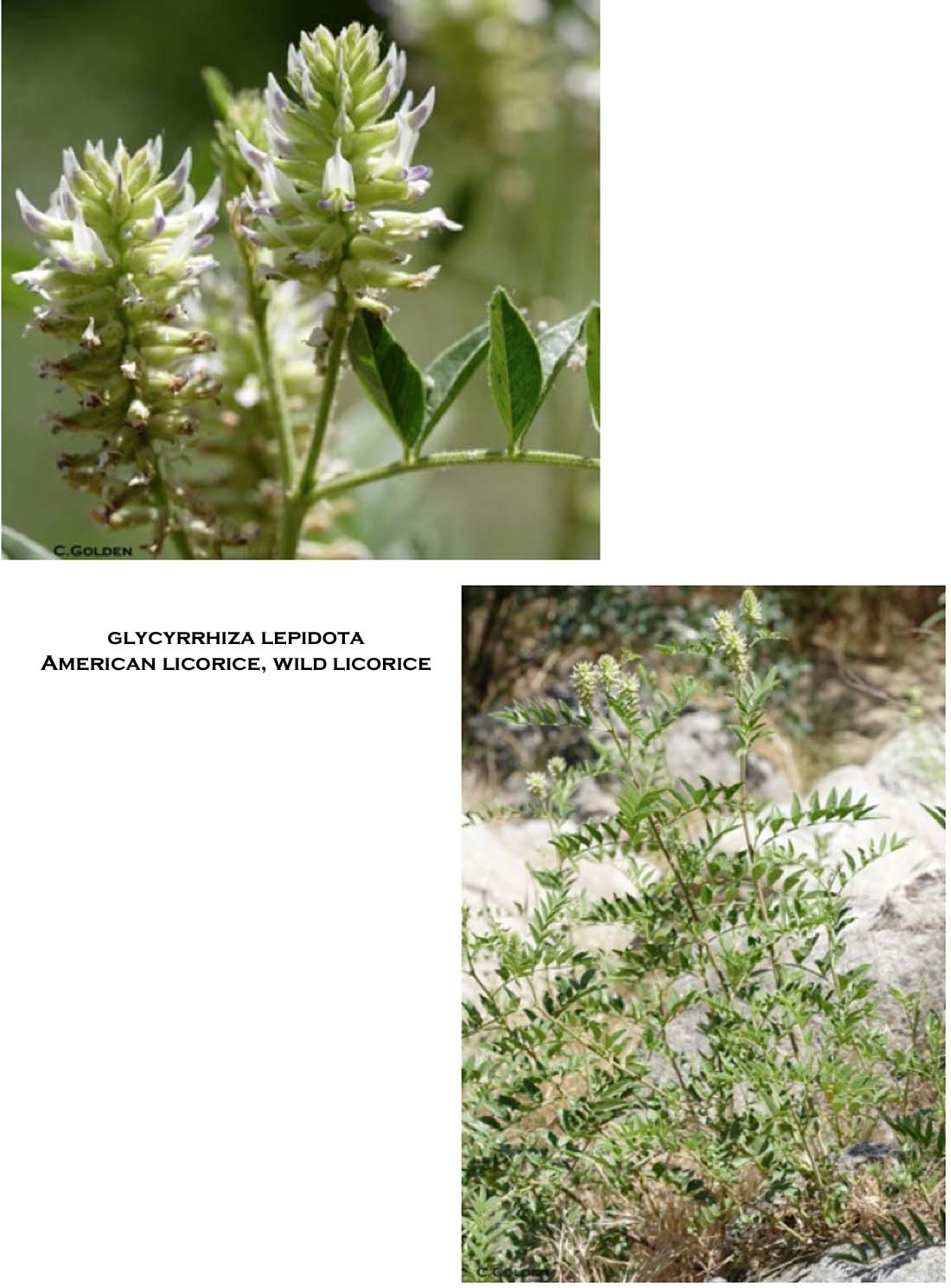
YARROW
Family: ASTERACEAE (COMPOSITAE) (SUNFLOWER FAMILY), Genus: Achillea, Species: millefolium (inc. A. lanulosa, no vars)
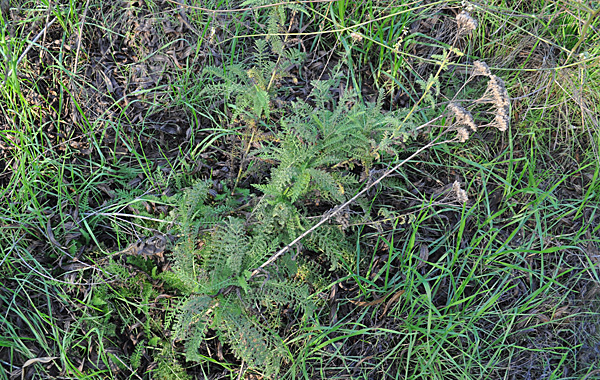
YELLOW MONKEY FLOWER
Erythranthe guttata, formerly known as Mimulus guttatus
Also called seep monkey flower.
Family: Phrymaceae, Genus: Erythranthe, Species: guttata
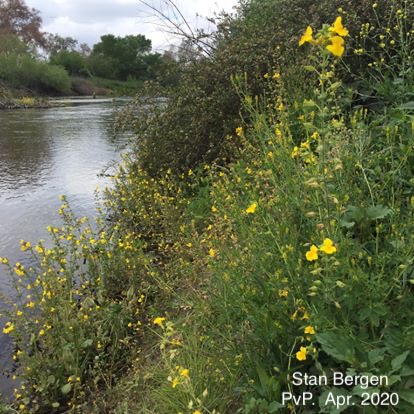
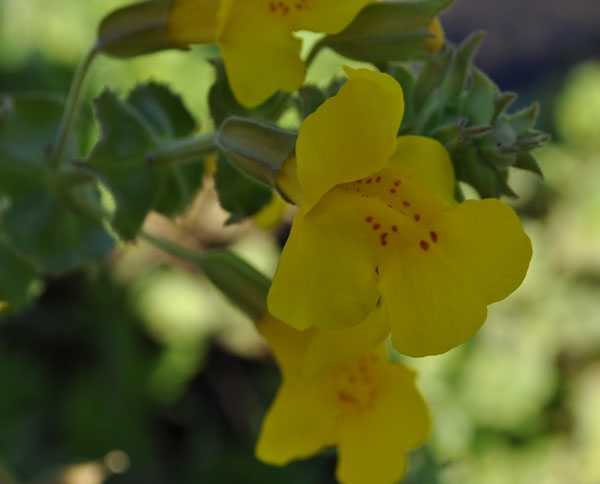
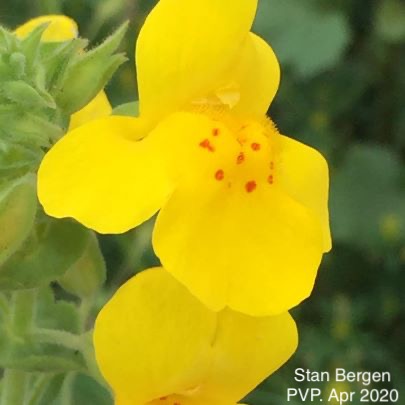
ONLINE RESOURCES:
Calflora.org
California Invasive Plant Council Database
California Native Plant Society
Center for Invasive Species and Ecosystem Health: Invasive Plant Atlas of the United States (University of Georgia)
Consortium of California Herbaria
Global Compendium of Weeds
iMap Invasives (Nature Conservancy)
Jepson Online Interchange for California Floristics
Jepson Manual Online
Theodore Payne Foundation California Native Plant Library
UC IPM Online Statewide Integrated Pest Management Program
USDA Natural Resources Conservation Servise: Plants Database
In memory of Steve Hampson, 1950- 2007
© S. Honig (text)
Photos courtesy of A.Honig unless otherwise noted